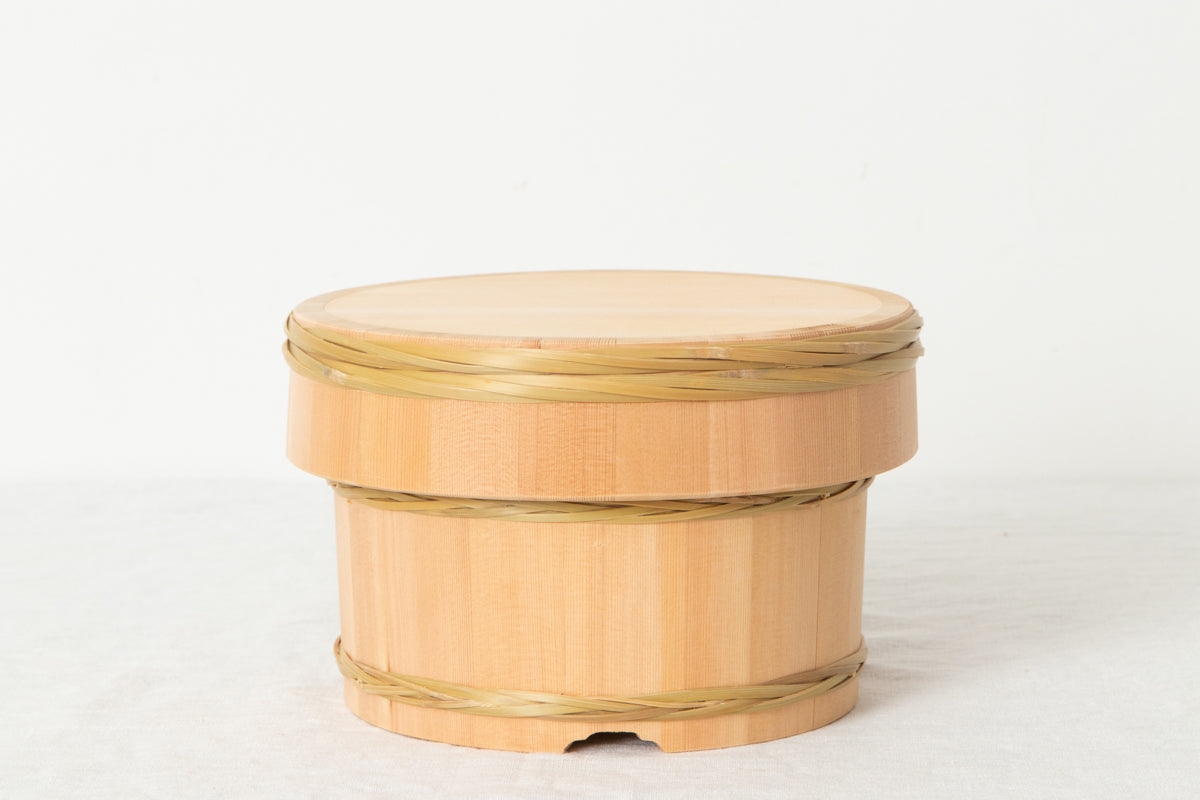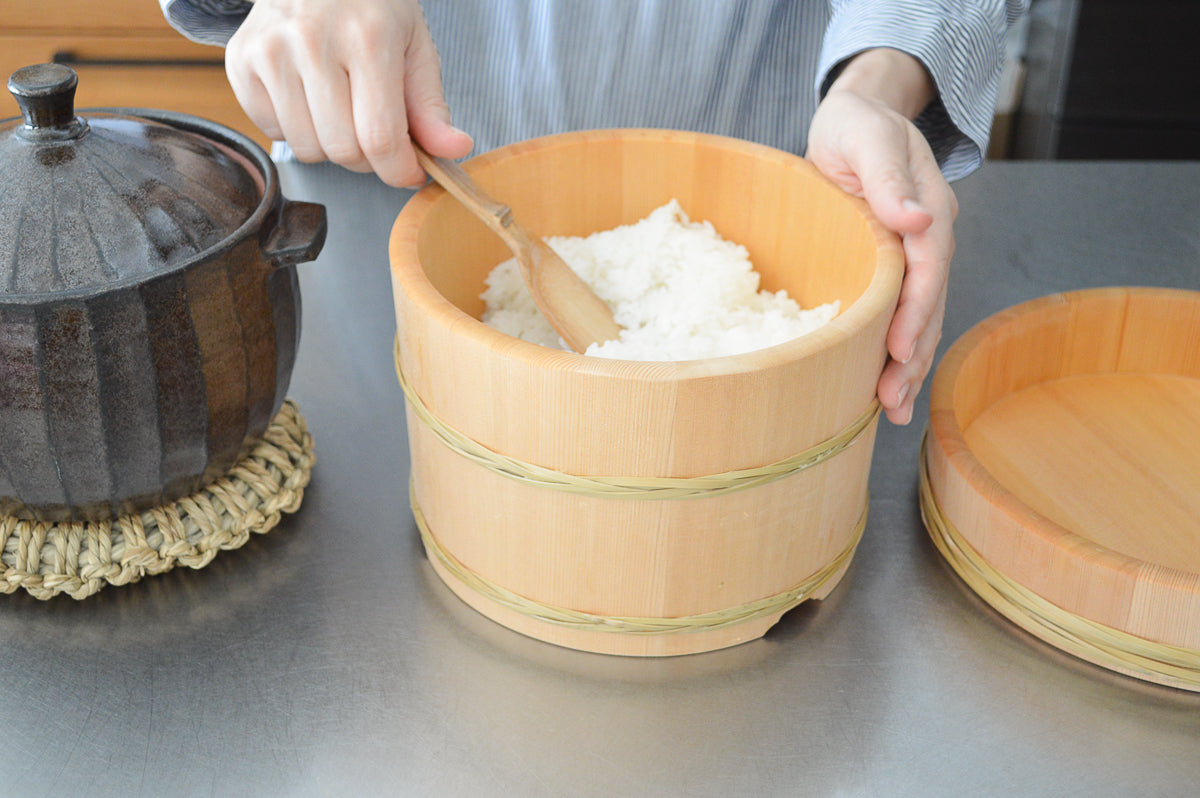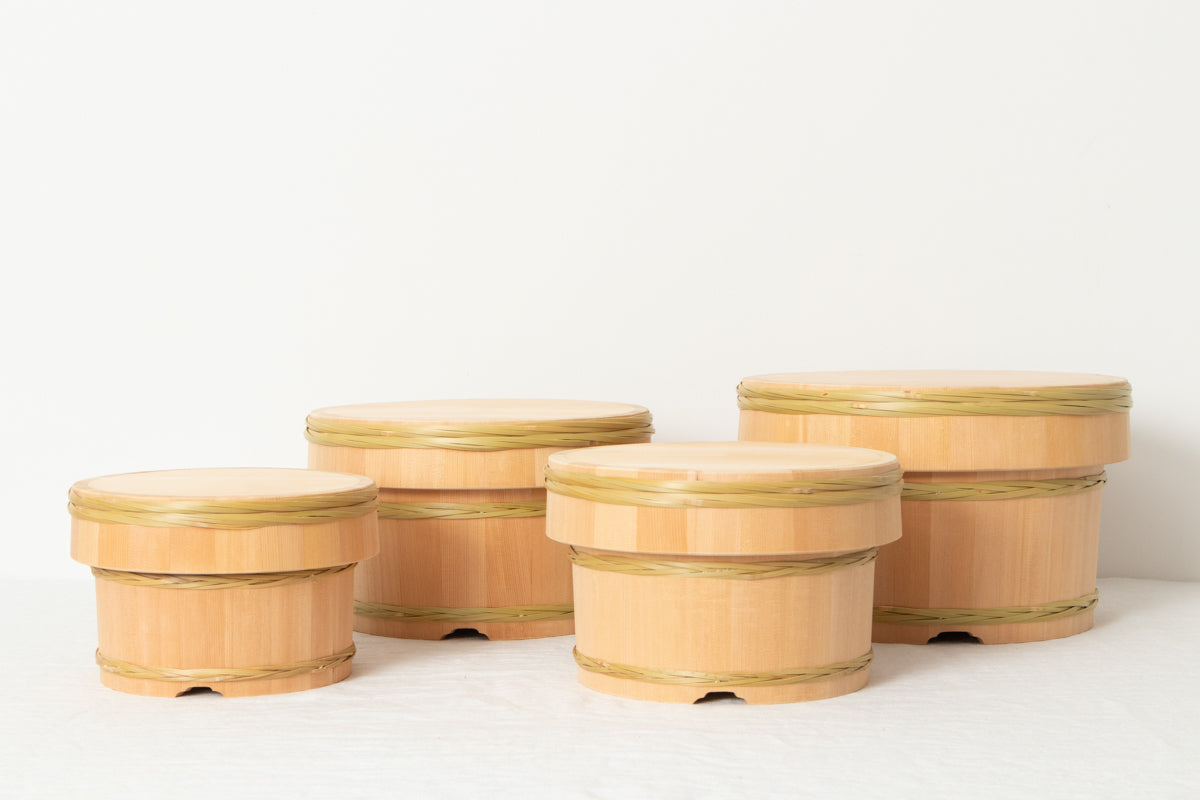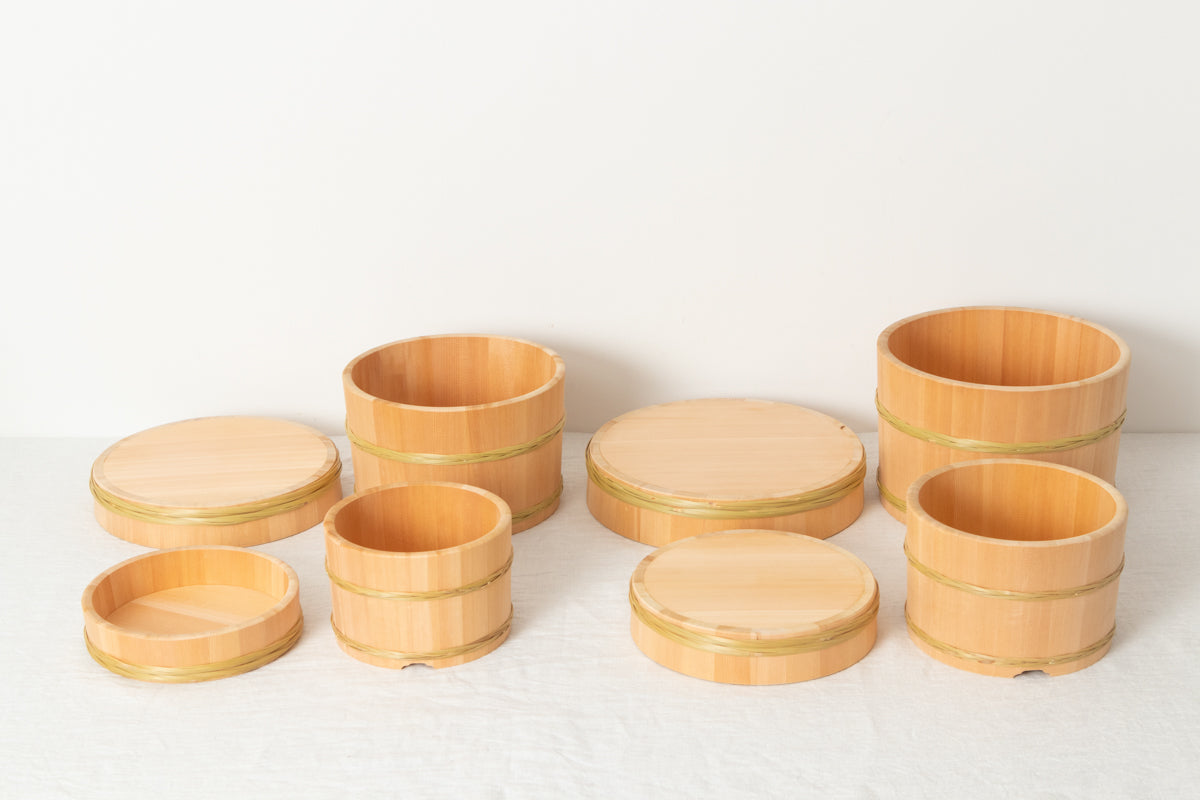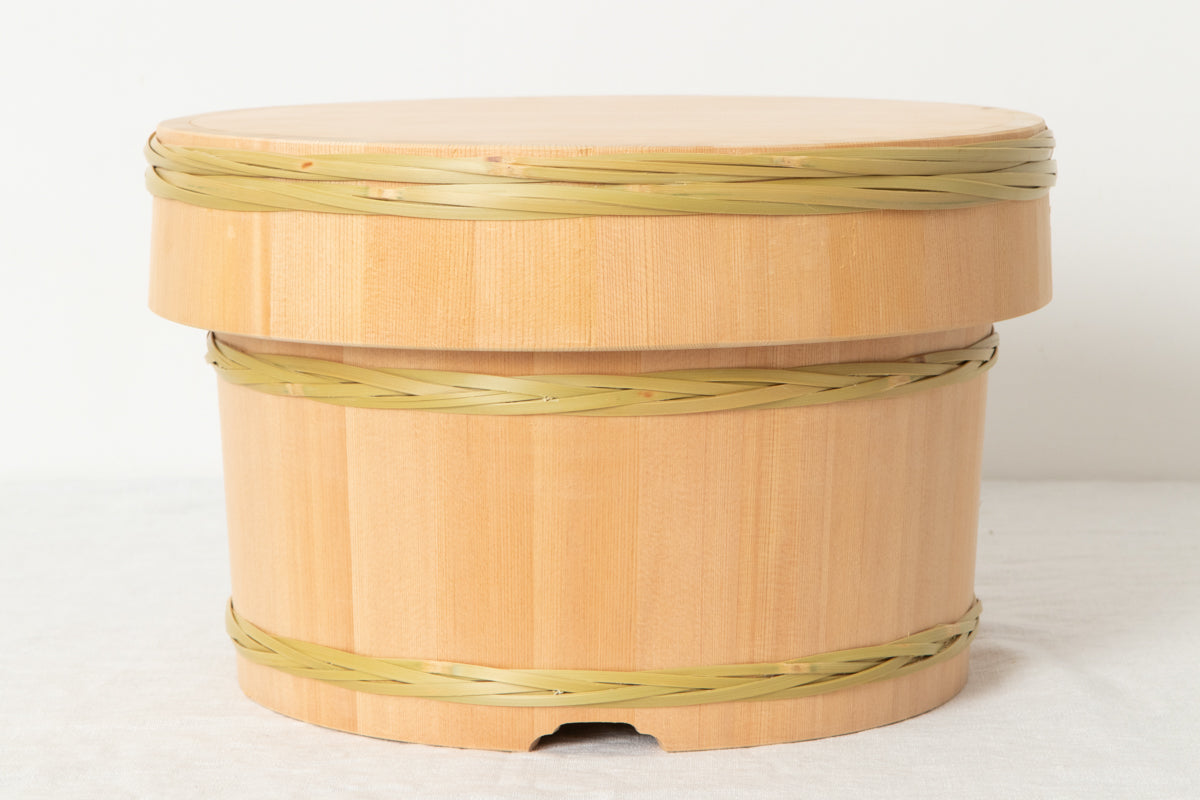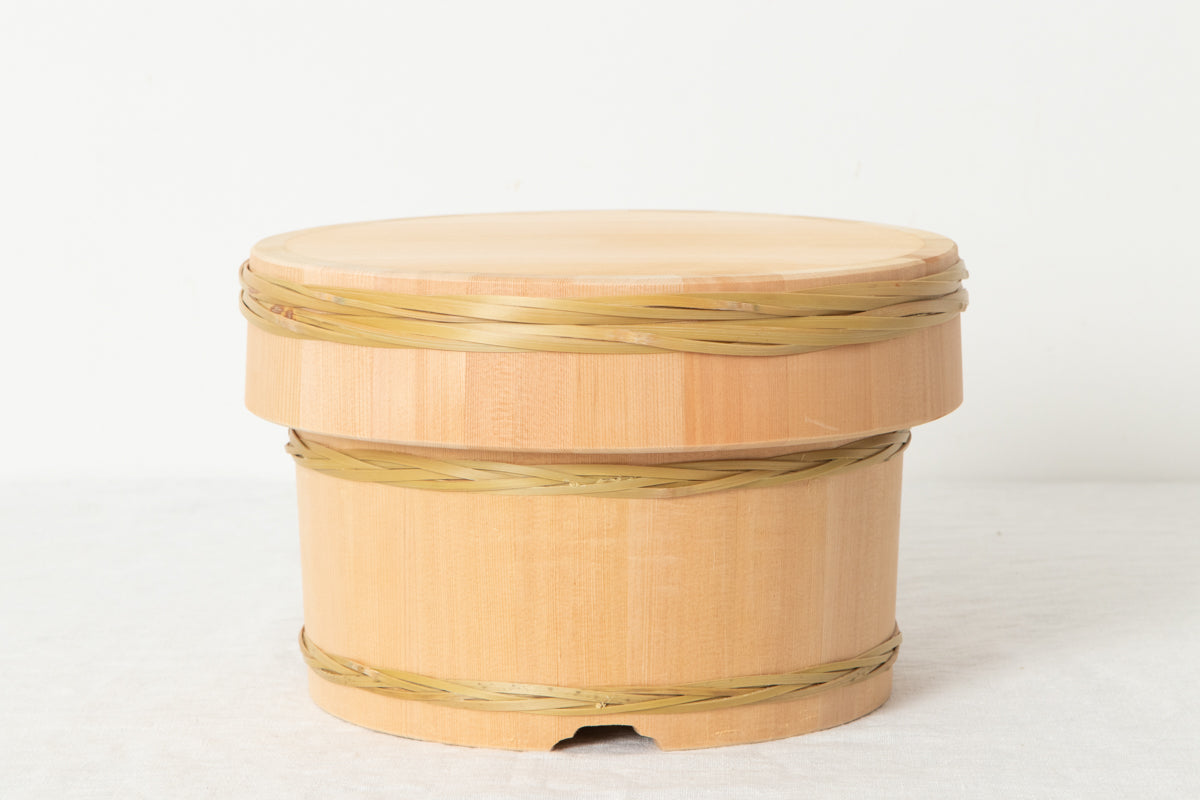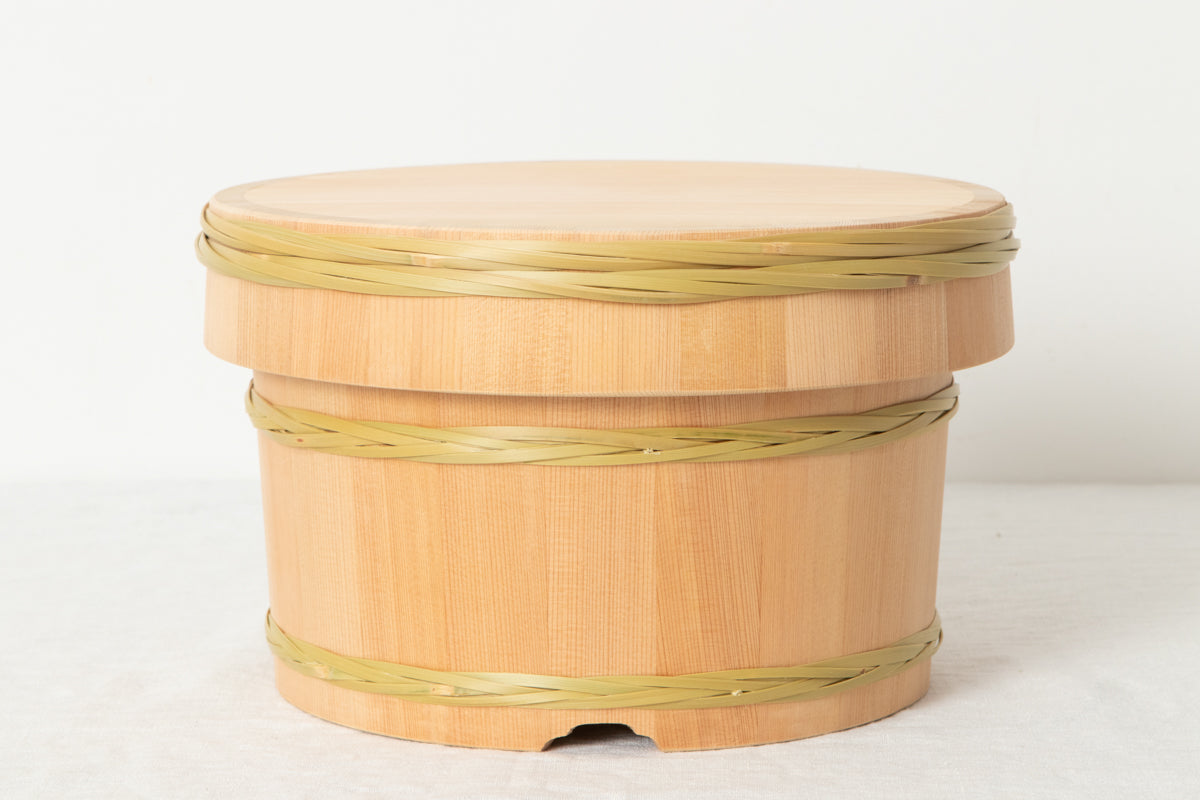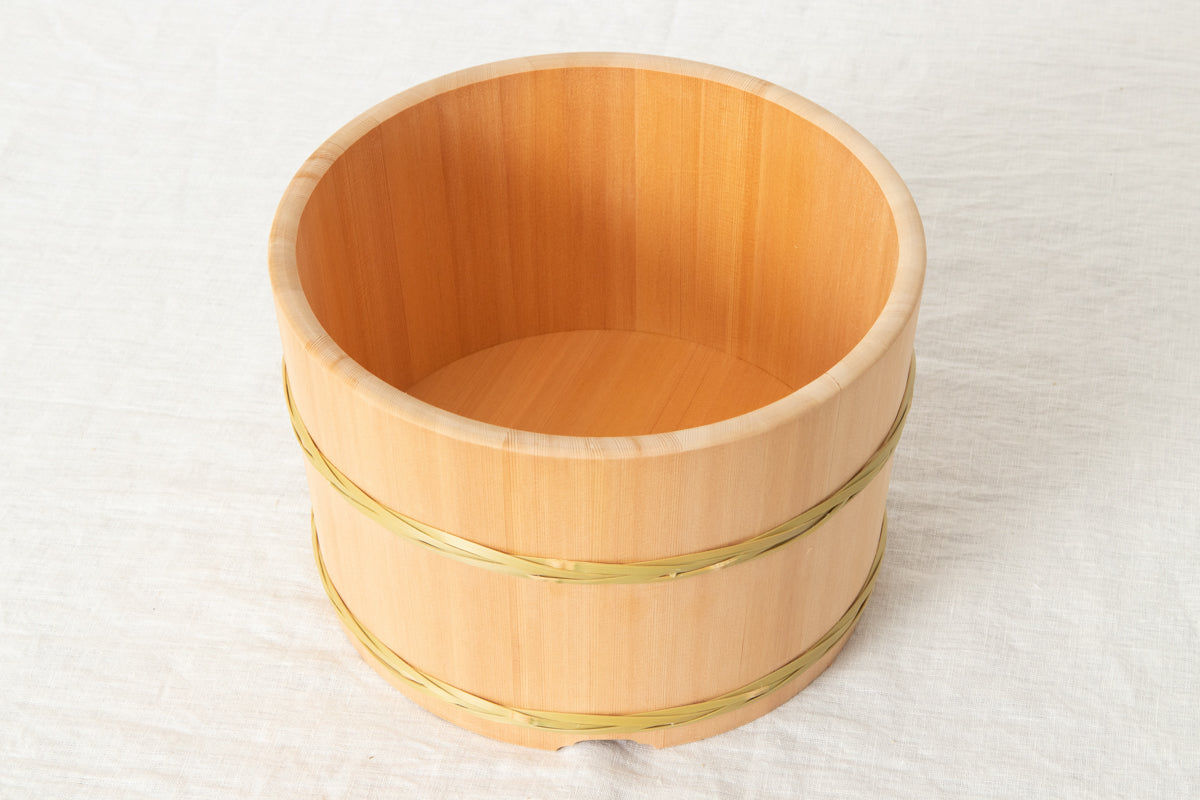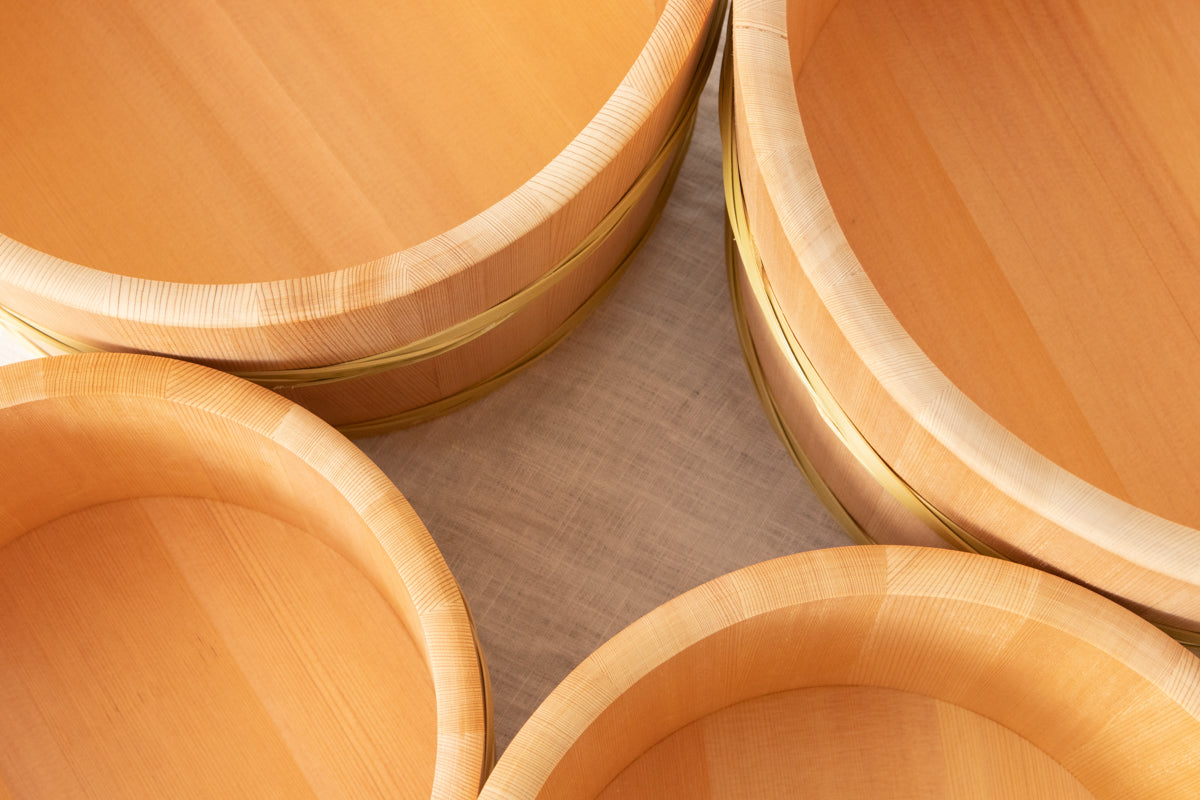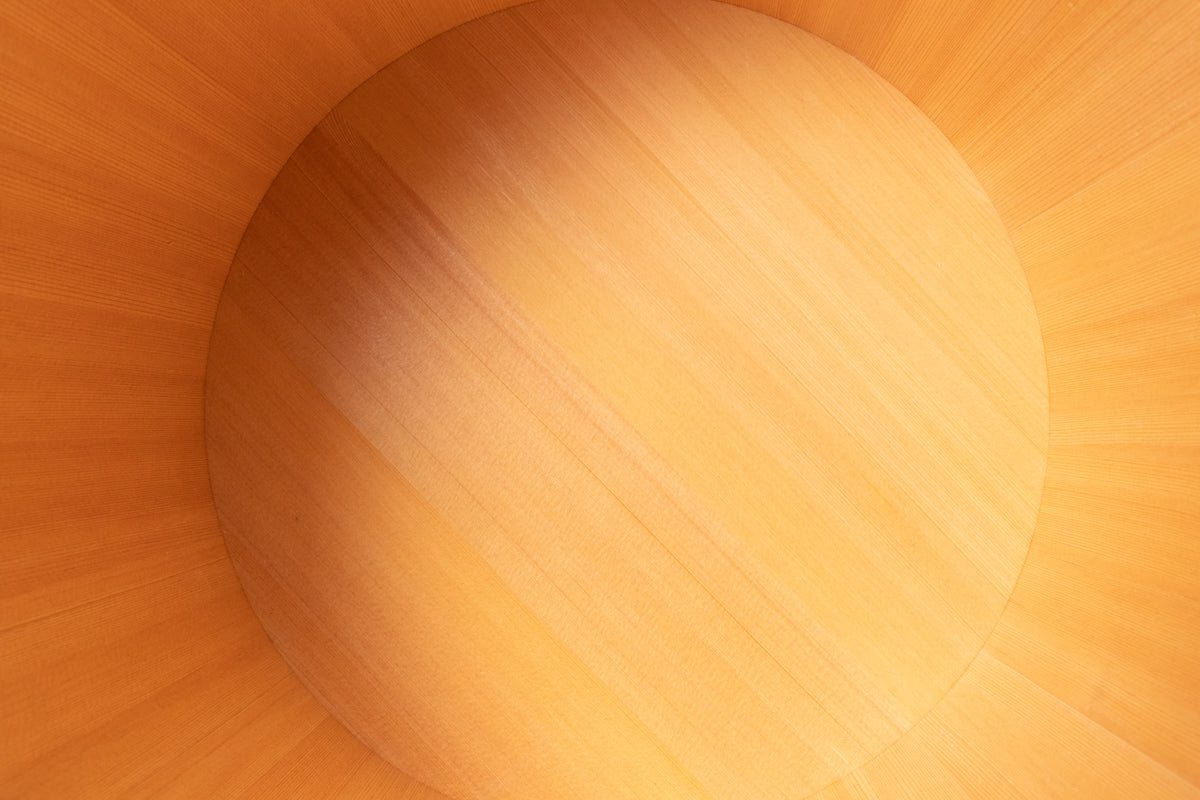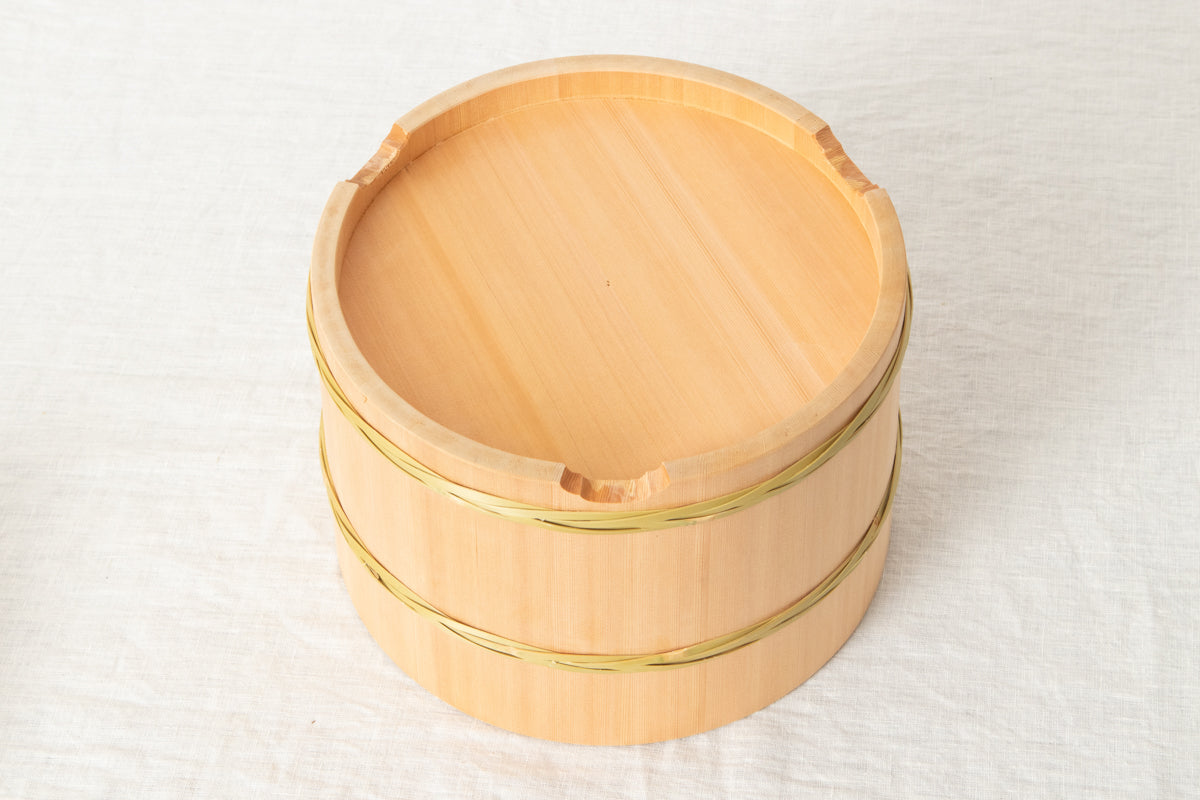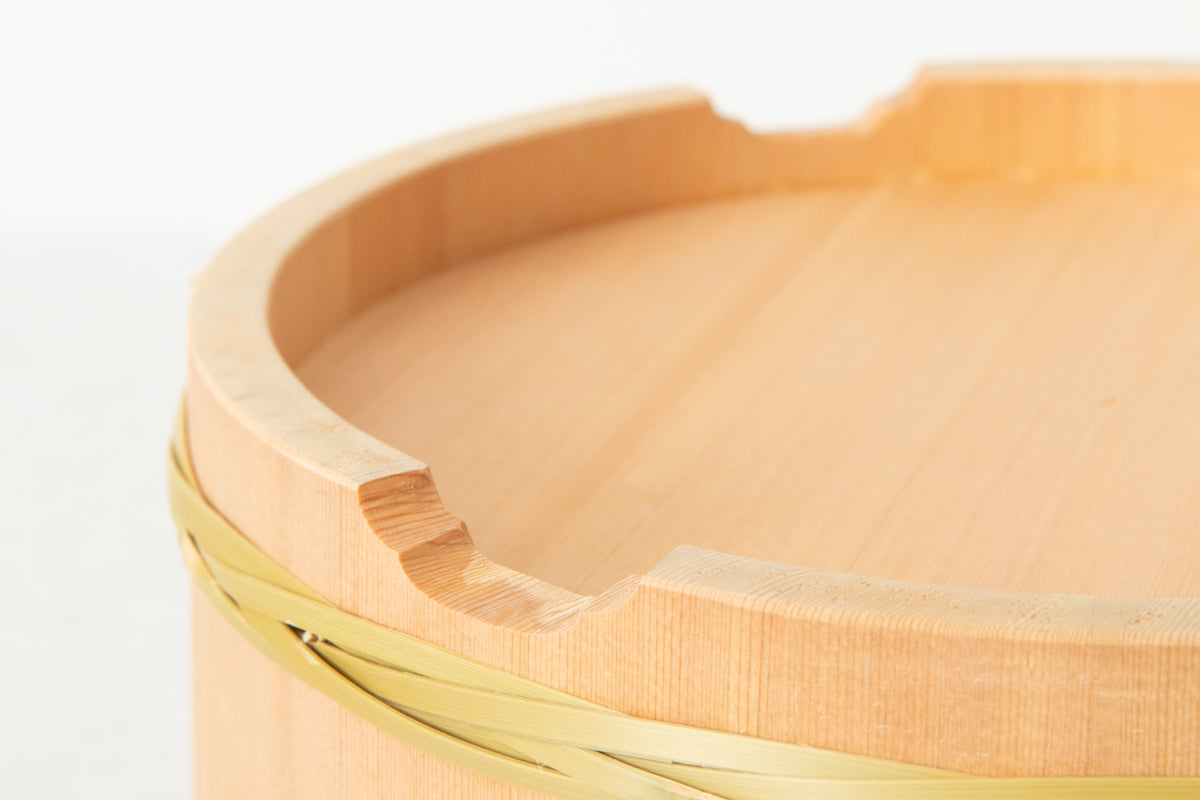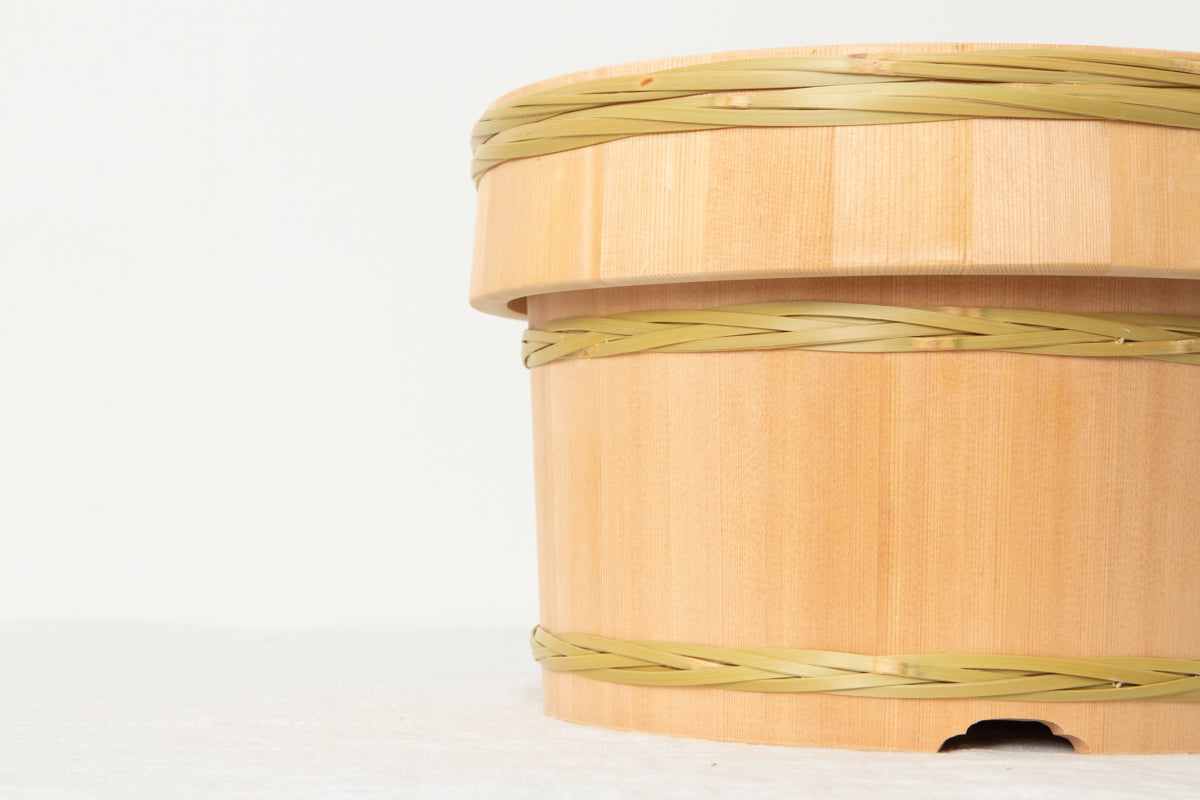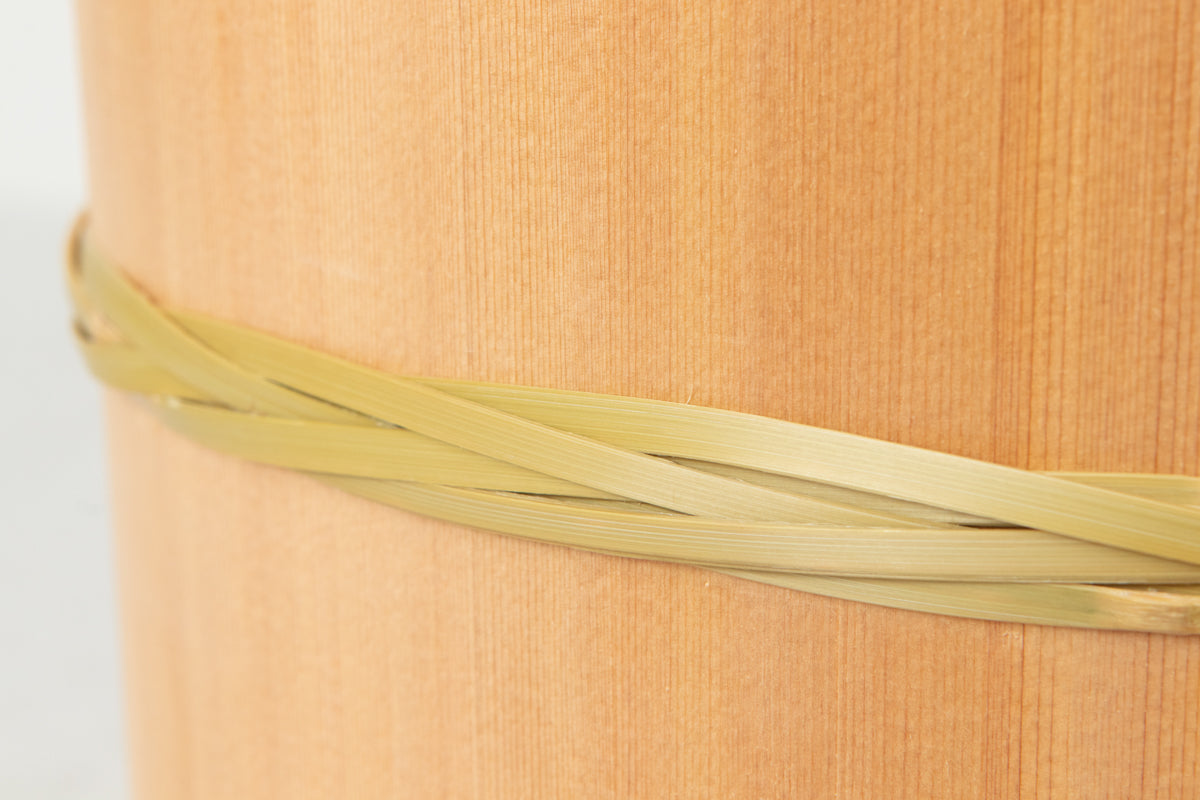Ohitsu Rice Container with Bamboo Hoop / Sawara Cypress / Nagano-JPN 811116
Ohitsu Rice Container with Bamboo Hoop / Sawara Cypress / Nagano-JPN 811116
Couldn't load pickup availability
- Size / Weight
- 18cm (7.09″): Approx. Ø 8.27″ × H 5.12″ / 15.87 oz
21cm (8.27″): Approx. Ø 9.45″ × H 5.91″ / 23.98 oz
24cm (9.45″): Approx. Ø 10.63″ × H 7.09″ / 33.51 oz
27cm (10.63″): Approx. Ø 11.81″ × H 7.48″ / 42.32 oz
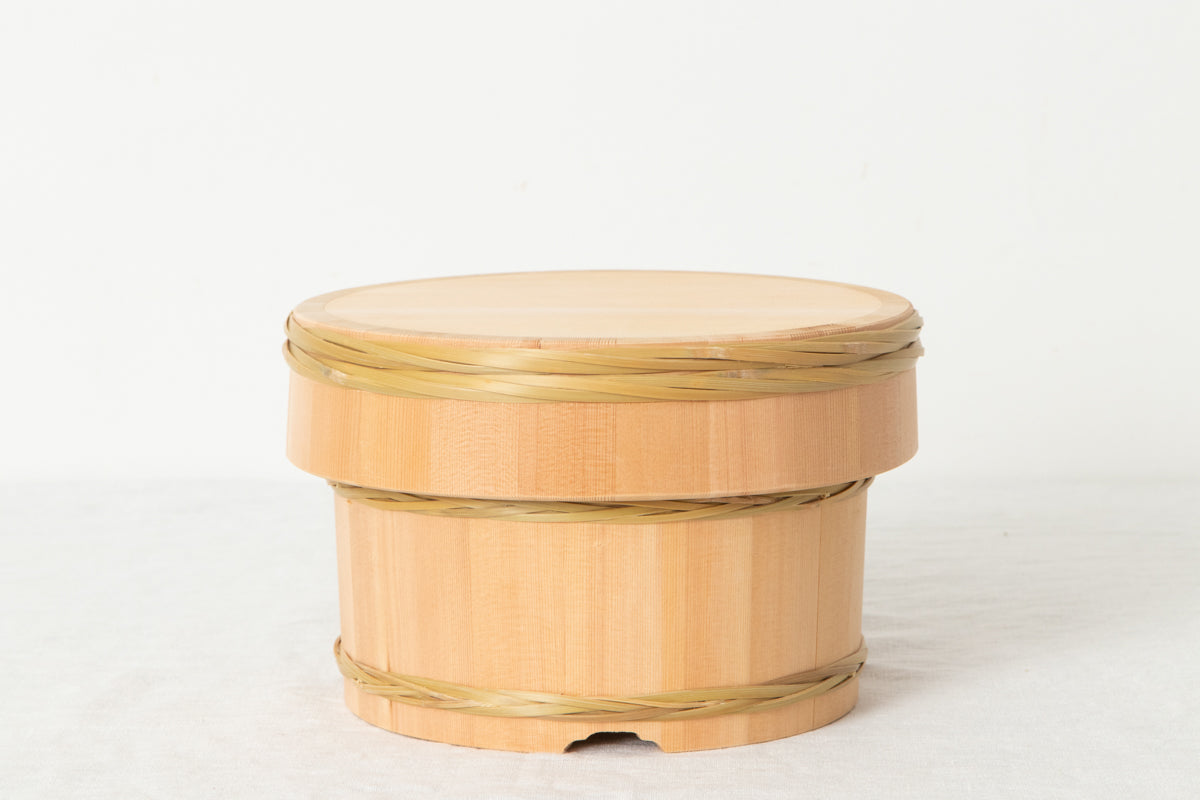
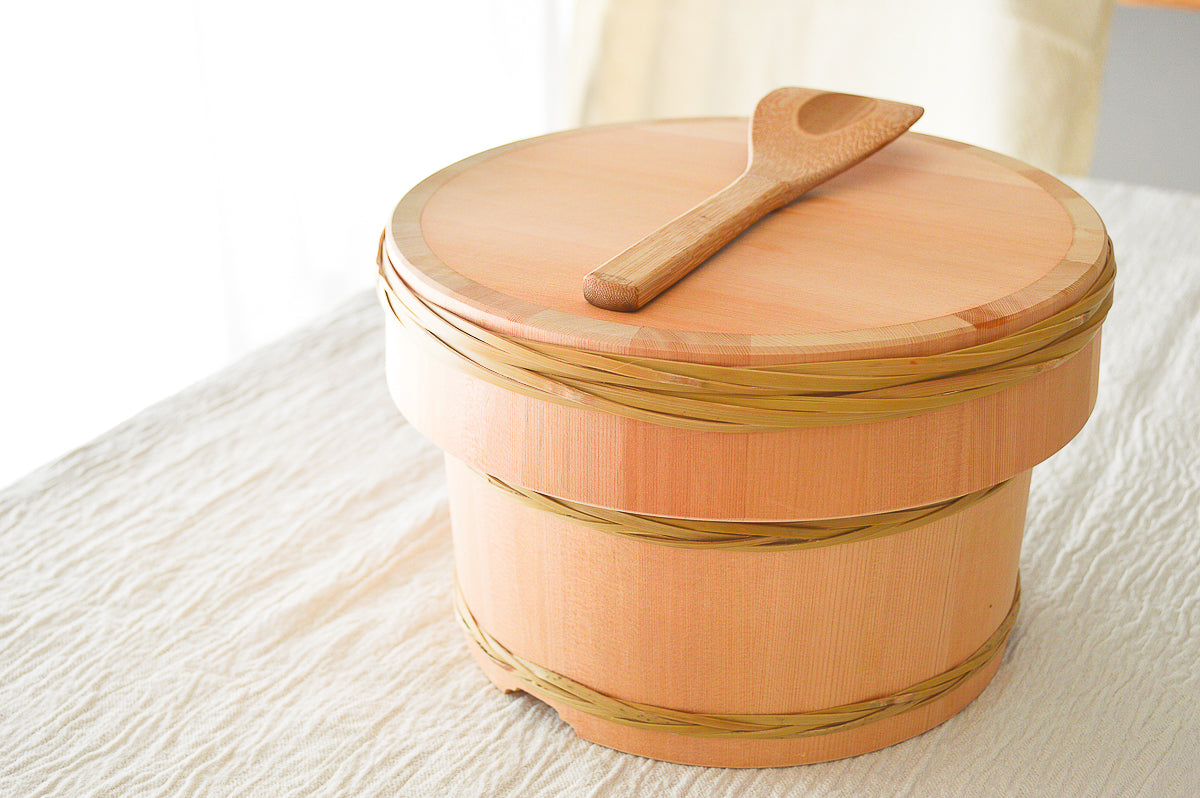
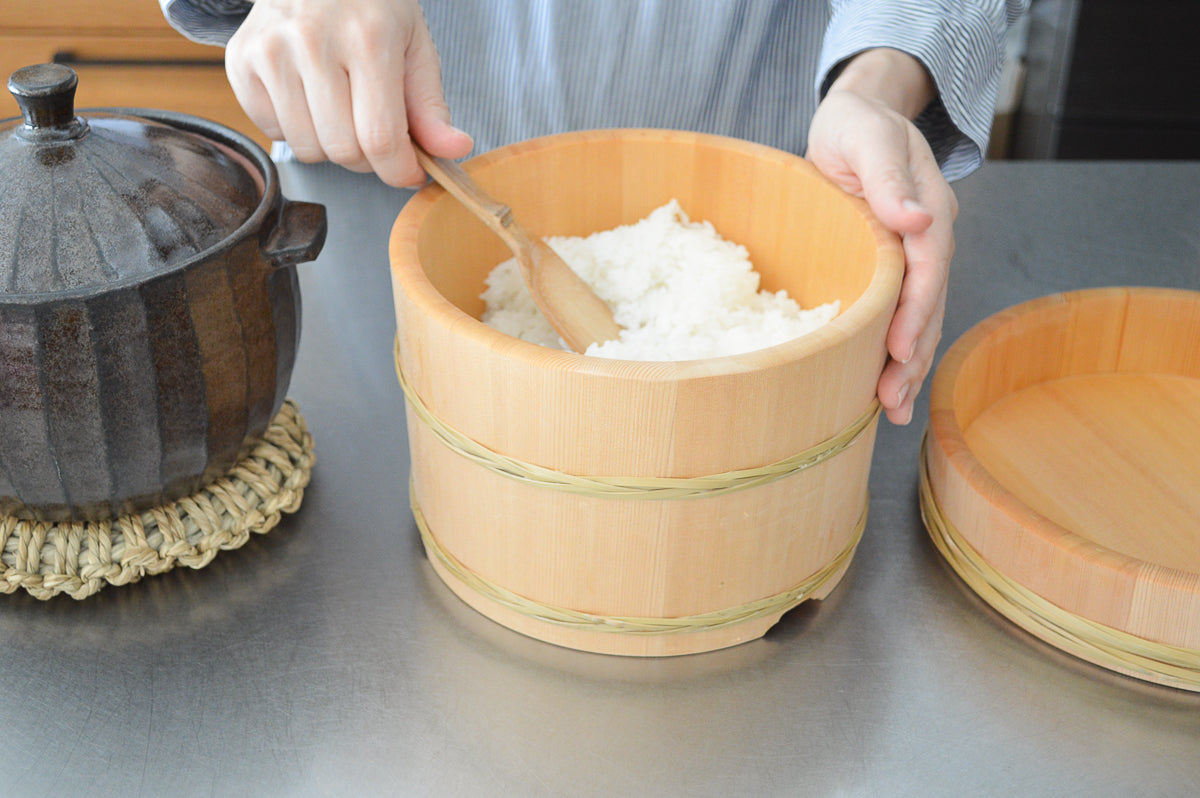
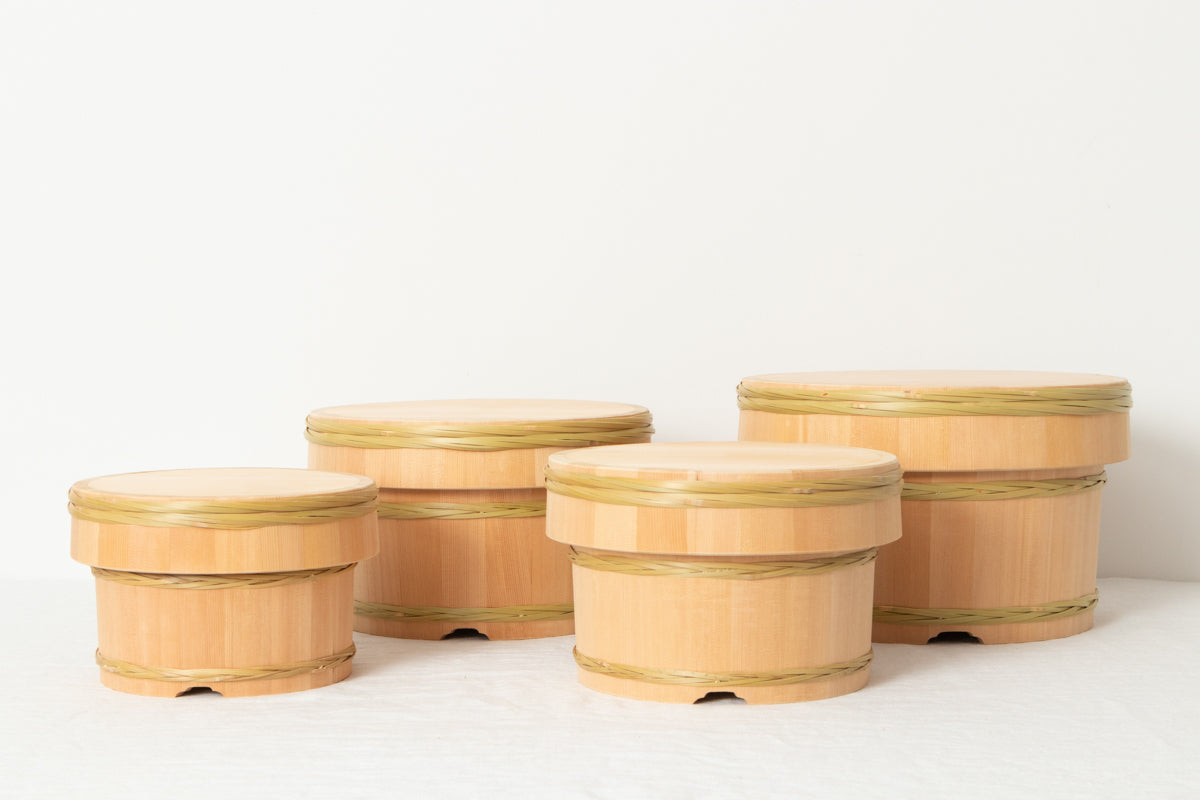
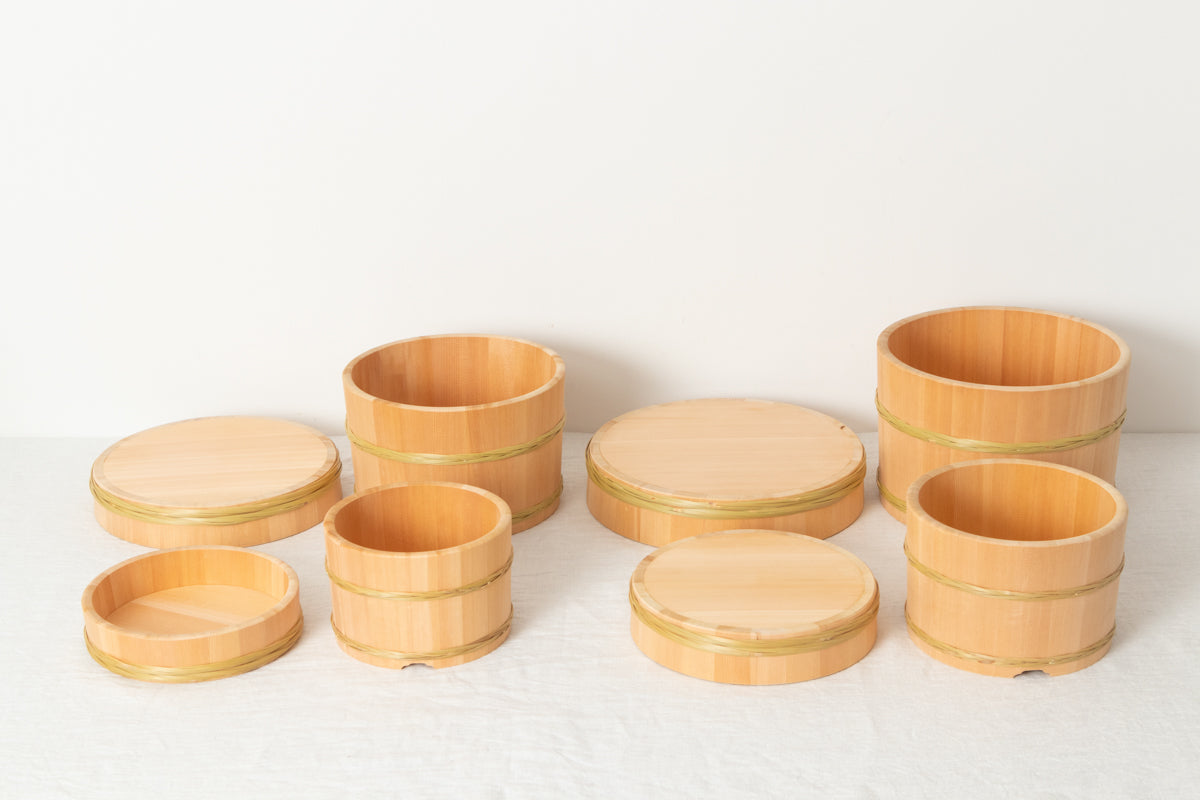
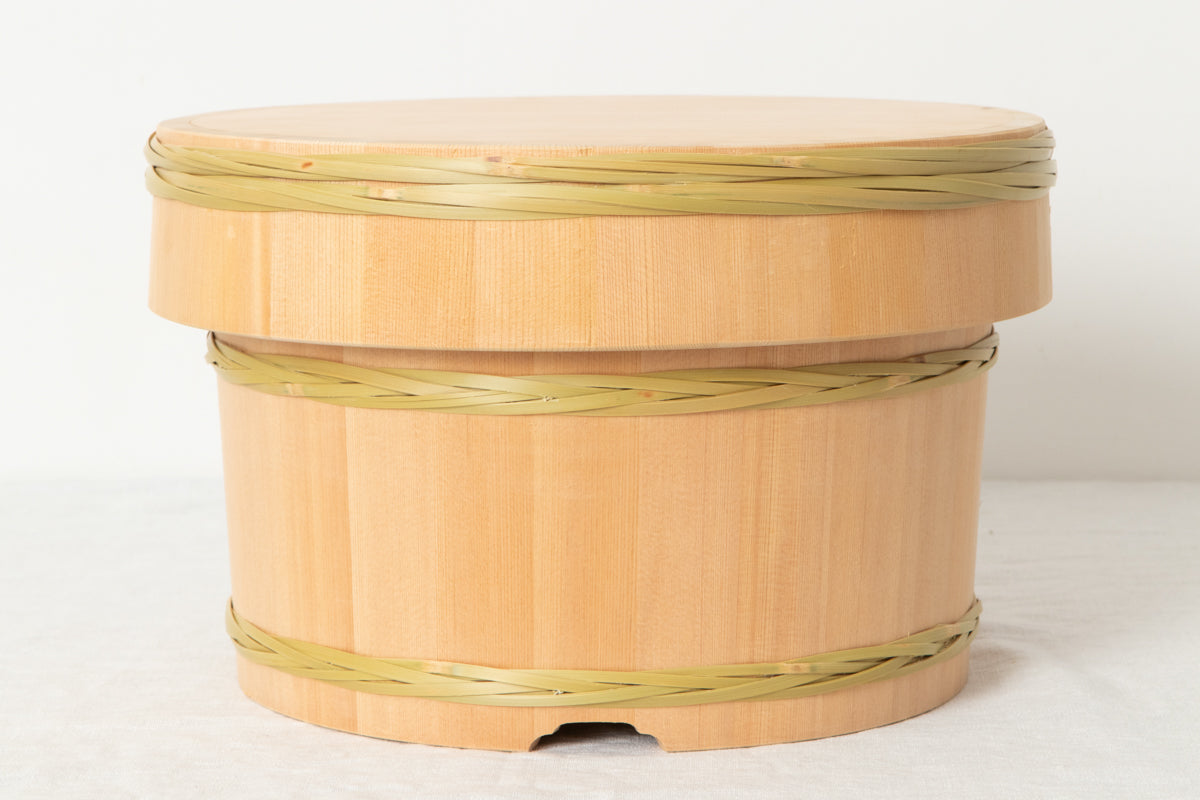
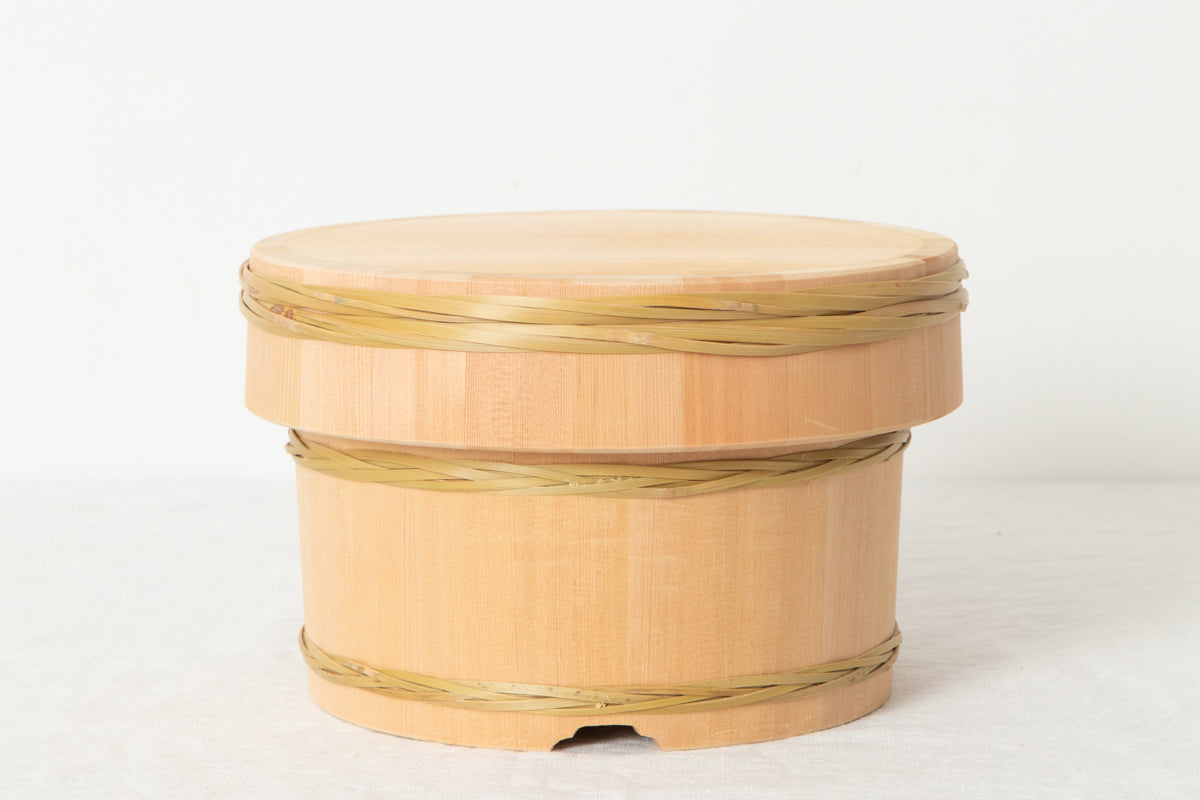
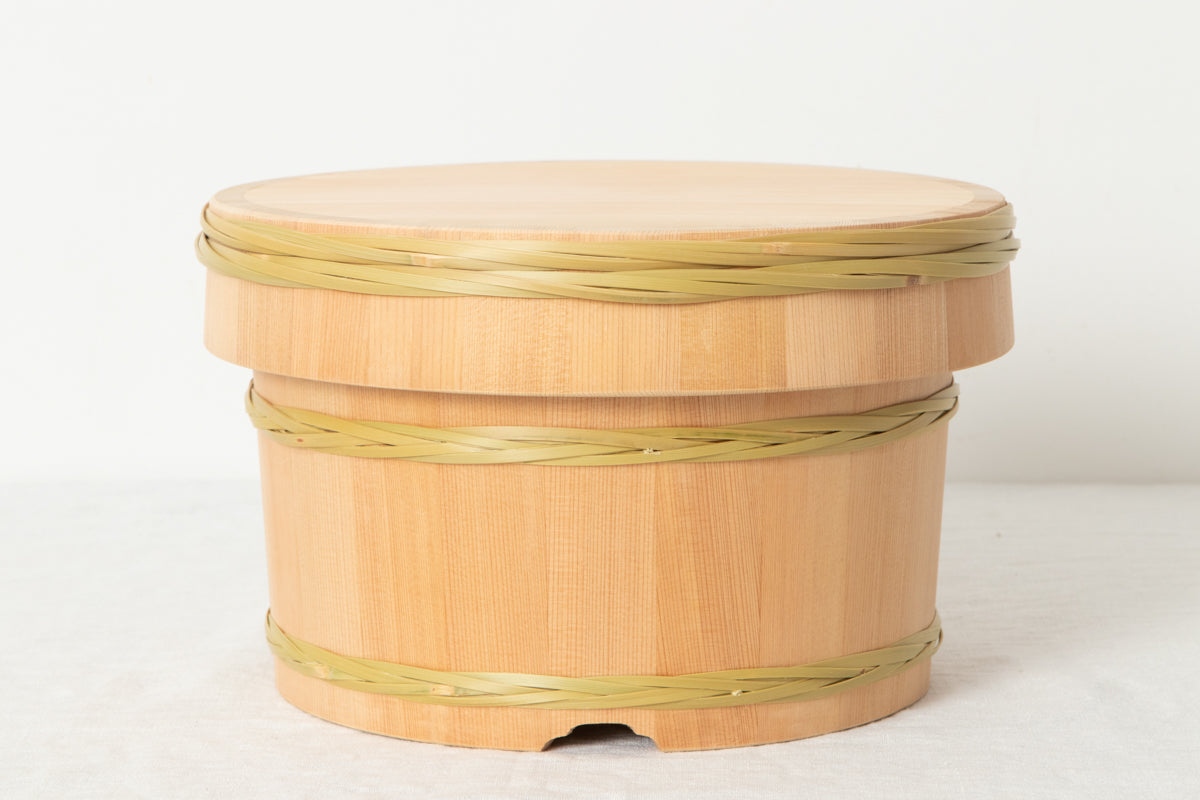
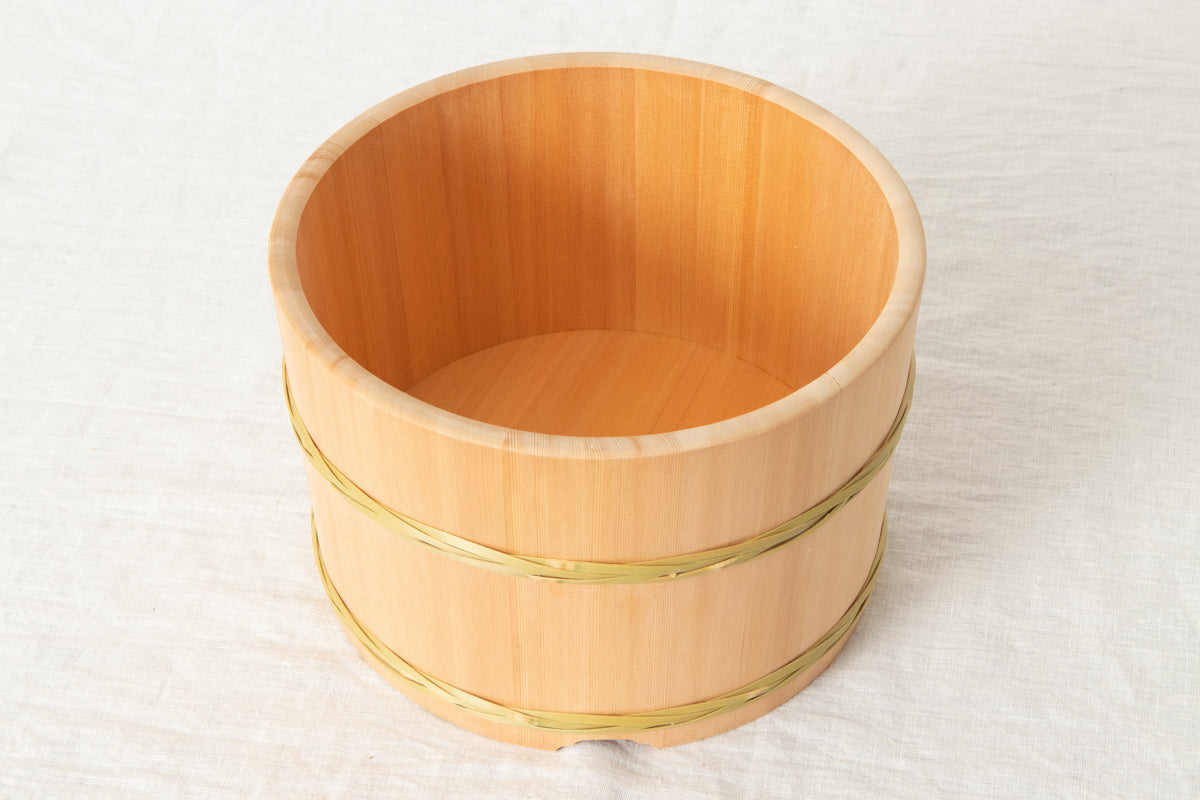
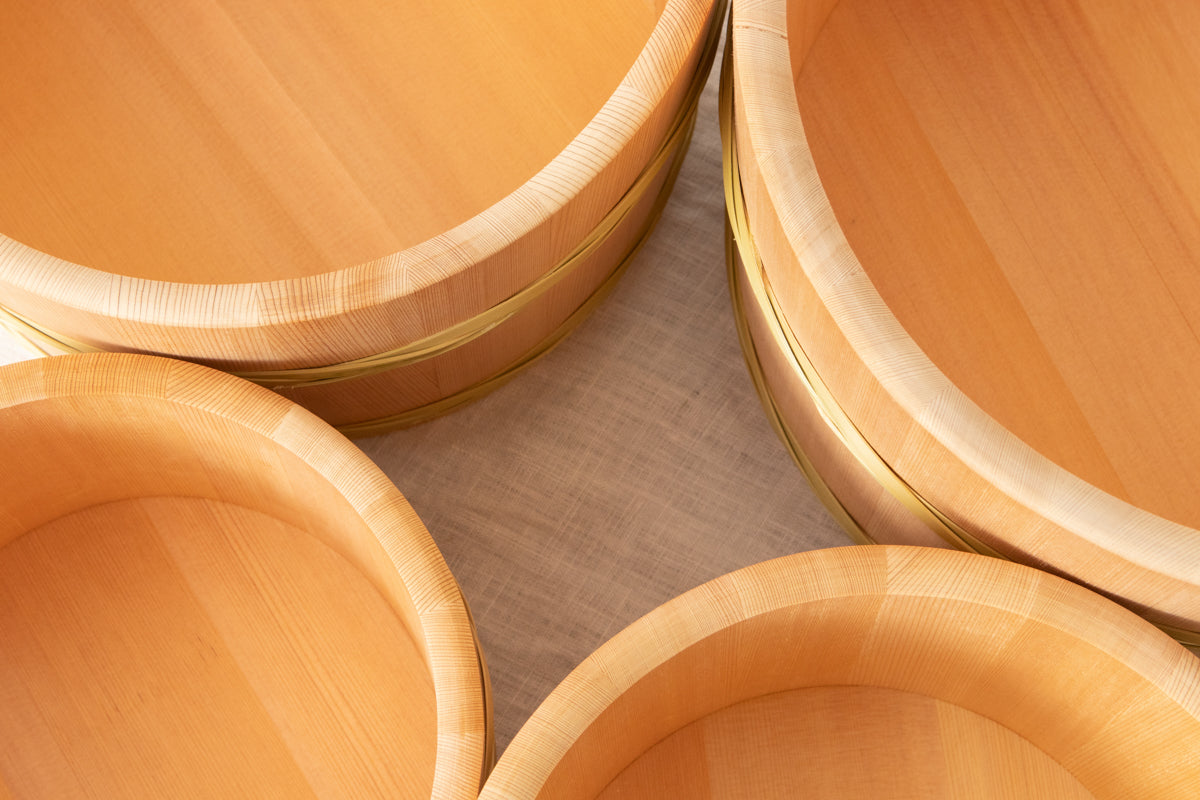
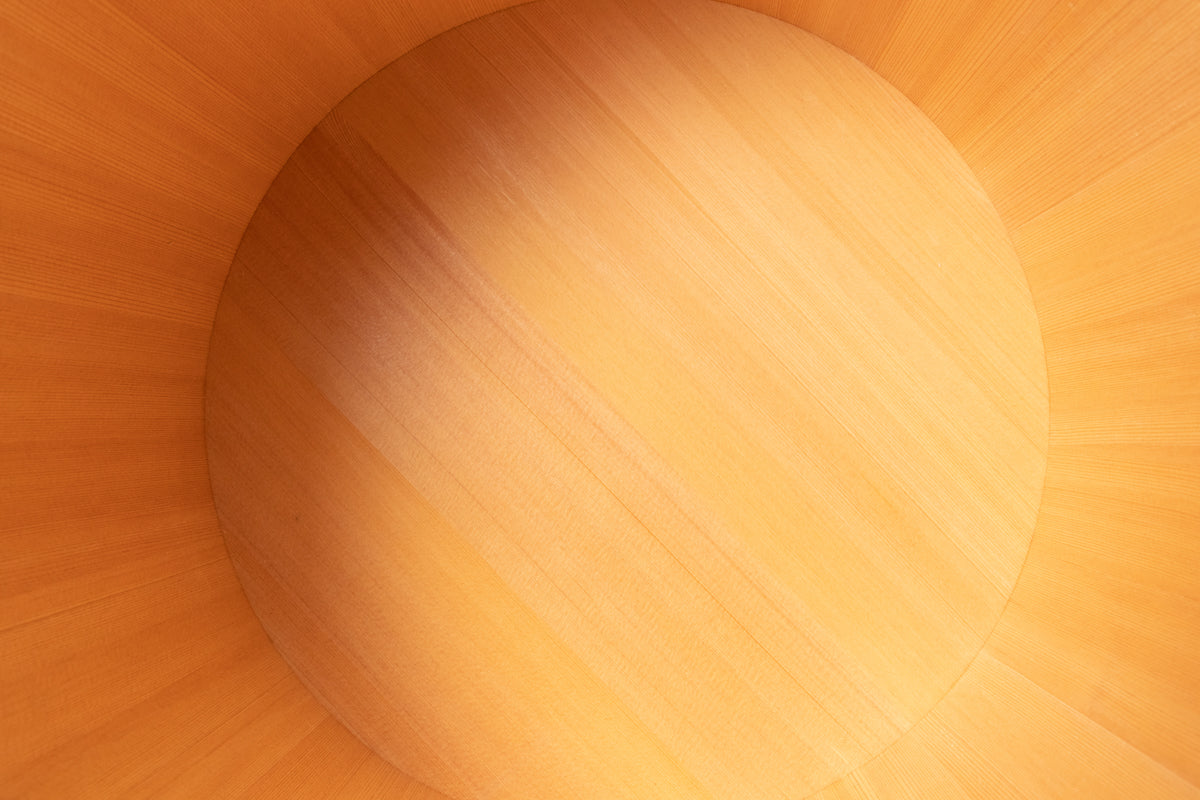
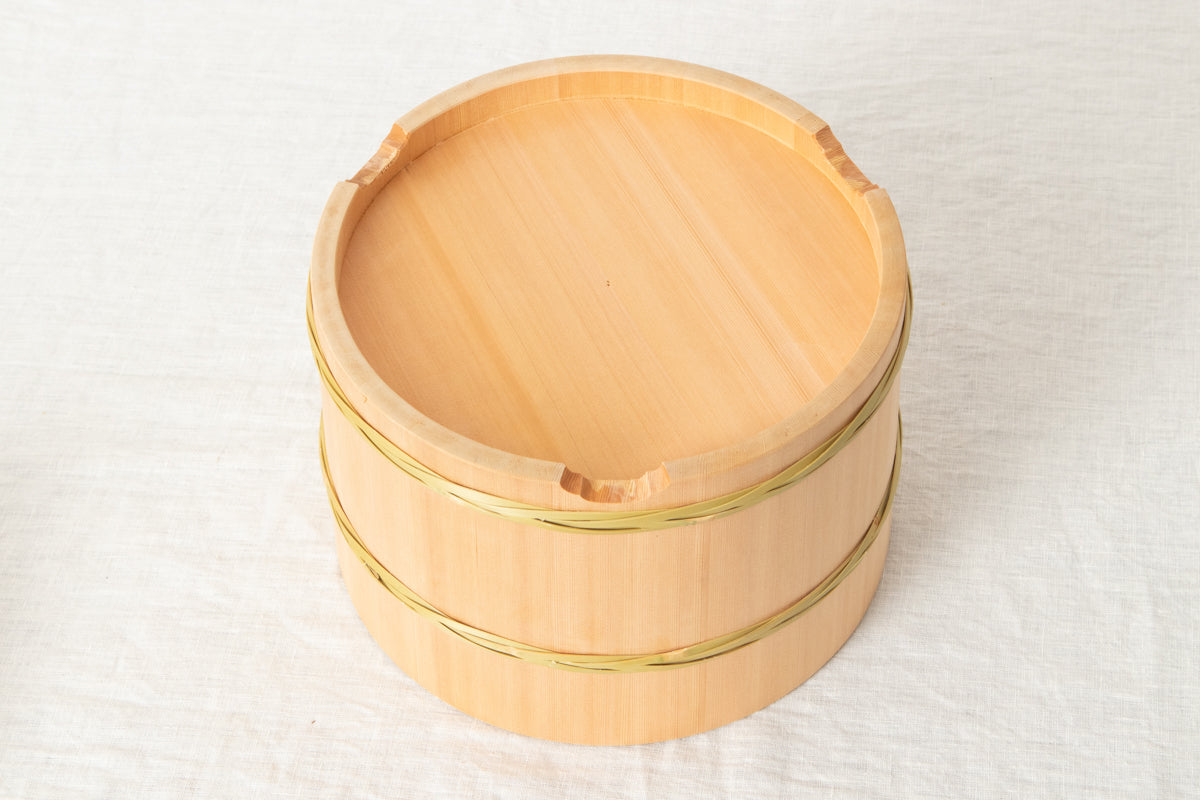
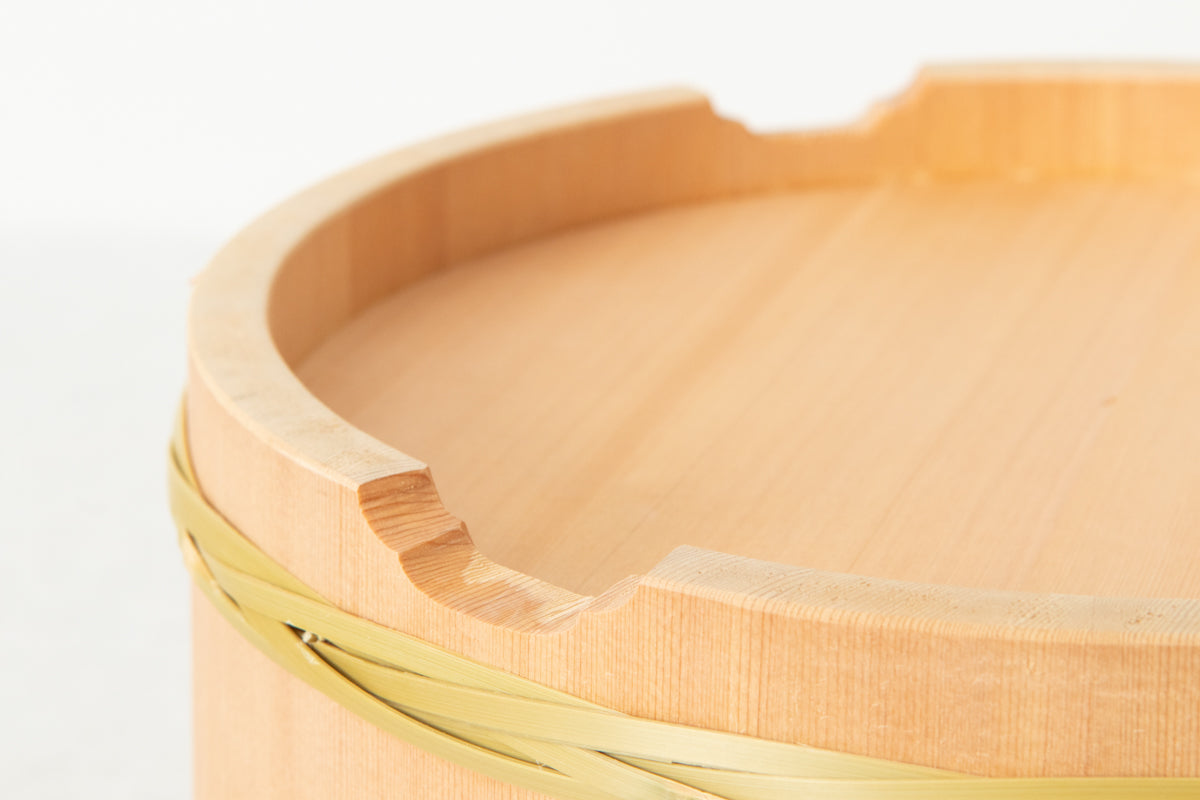
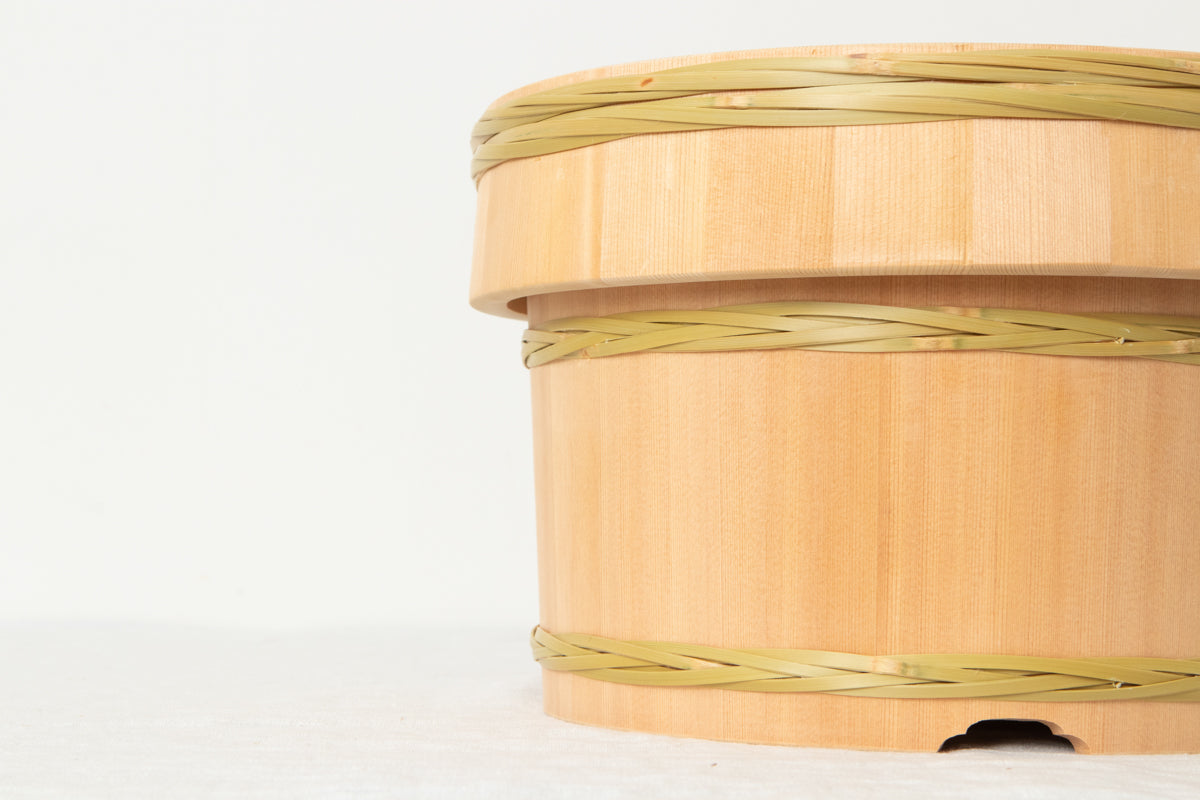
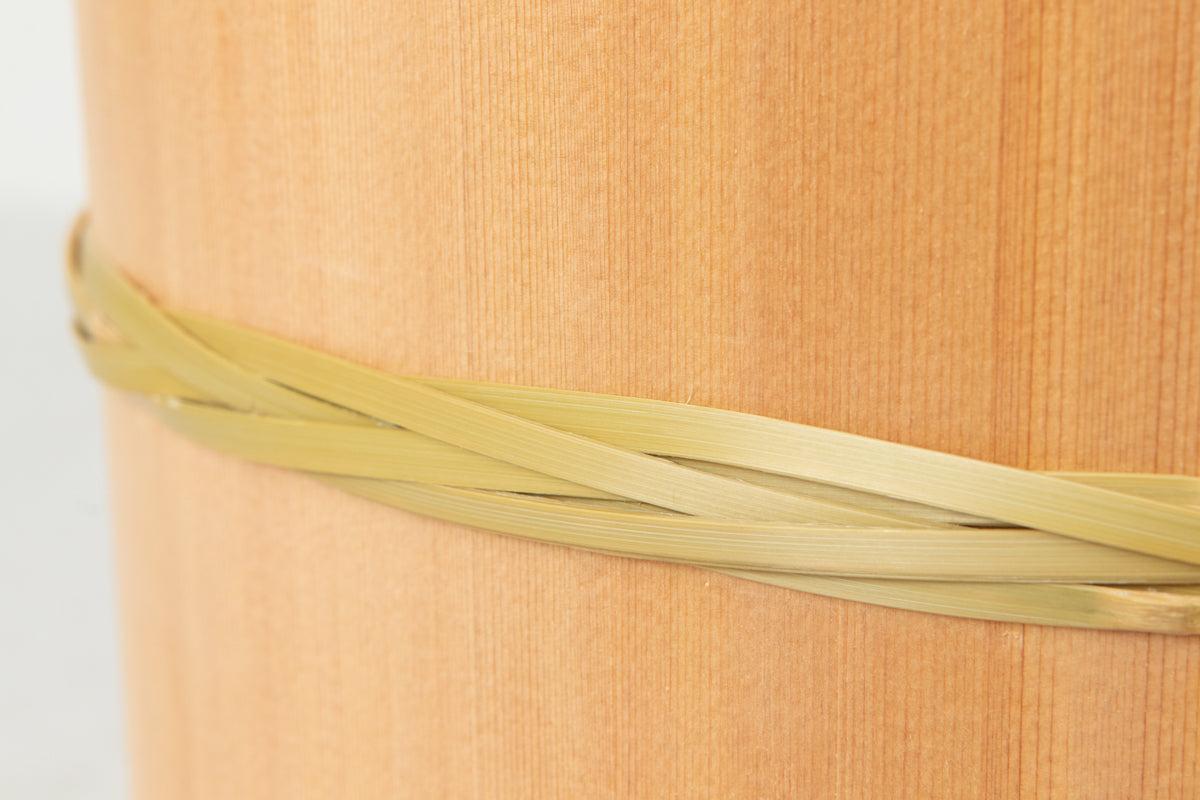
-
Note
The sizes shown above are the middle of the total quantity of items we receive, and are only a rough estimate.
Also, external dimensions are provided.
Some of them may be 2-3 cm (1inch) larger or smaller than the sizes indicated because they are handmade using natural materials.
If you have a specific place in mind where you would like to store the item, please order it with enough space to spare.
Also, the shape, texture, and color of each item will vary.
Please be aware of this before ordering. -
Caution
Please be careful not to damage your body or clothing with sprinters.
For all materials, please store in a well-ventilated place and avoid storing in cupboards, etc. as much as possible.
When storing, it is best to avoid direct sunlight and to place them in an elevated place where moisture does not accumulate.
If the product gets wet from rain or water, wipe it off with a dry cloth and dry it well in the shade or indoors in a well-ventilated location.
Regular brushing with a scrubber or brush is recommended to prevent dust accumulation.
-
Shipping
We deliver products worldwide. Shipping costs are automatically calculated according to your location and what you order.
We will ship with care and attention.You can see shipping policy here
-
How to care
These products are made from all-natural materials and if taken good care of they will last for dozens of years. Products made of natural materials also change beautifully over time.
Check "How to care" page here
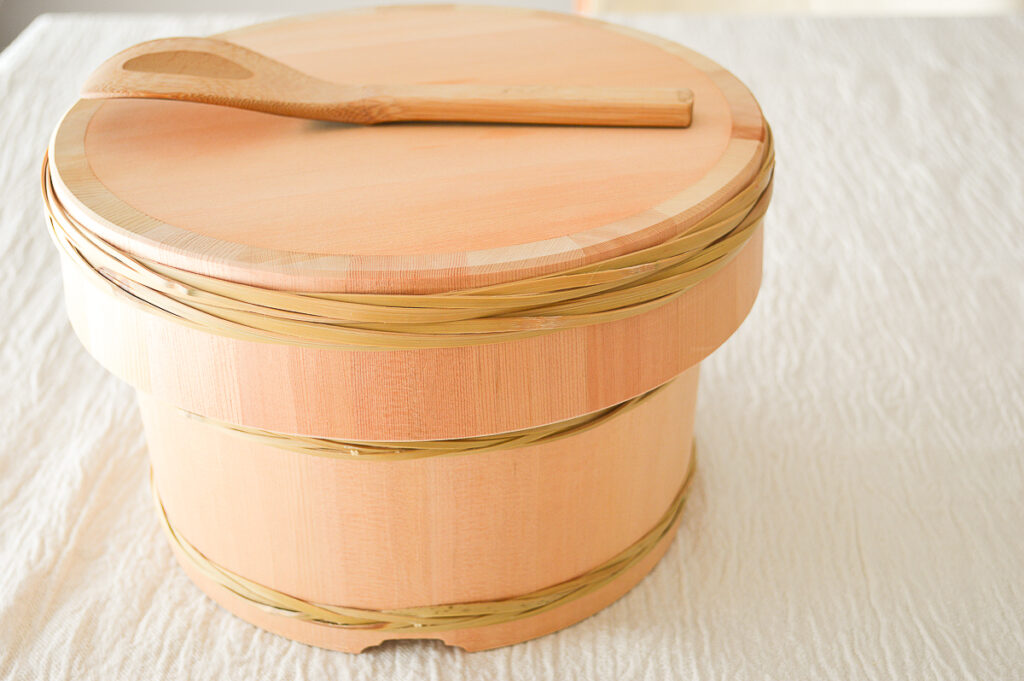
This is an ohitsu—a rice container made from sawara cypress.
An ohitsu is traditionally used to store freshly cooked rice.
In Japan, it has long been a part of daily life: lacquered versions were used for ceremonial occasions, while plain wooden ones like this have been favored for everyday use.
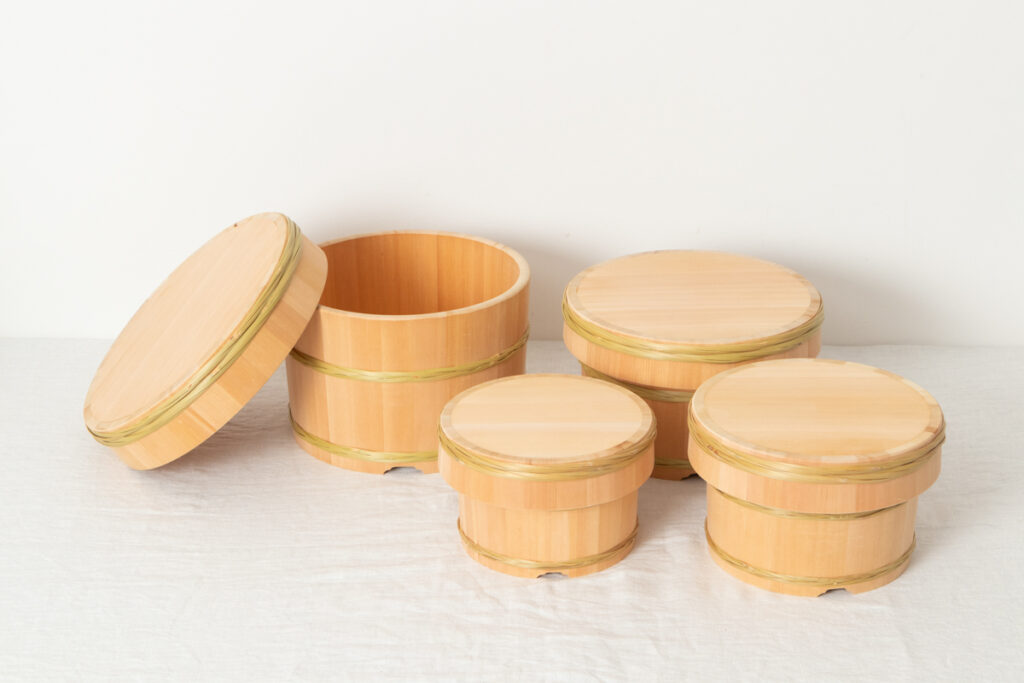
This product uses Kiso sawara, a type of sawara cypress grown in the Kiso region of Nagano.
The standing trees resemble hinoki in appearance, but the wood is softer, lighter, more water-resistant, and easier to work with than hinoki.
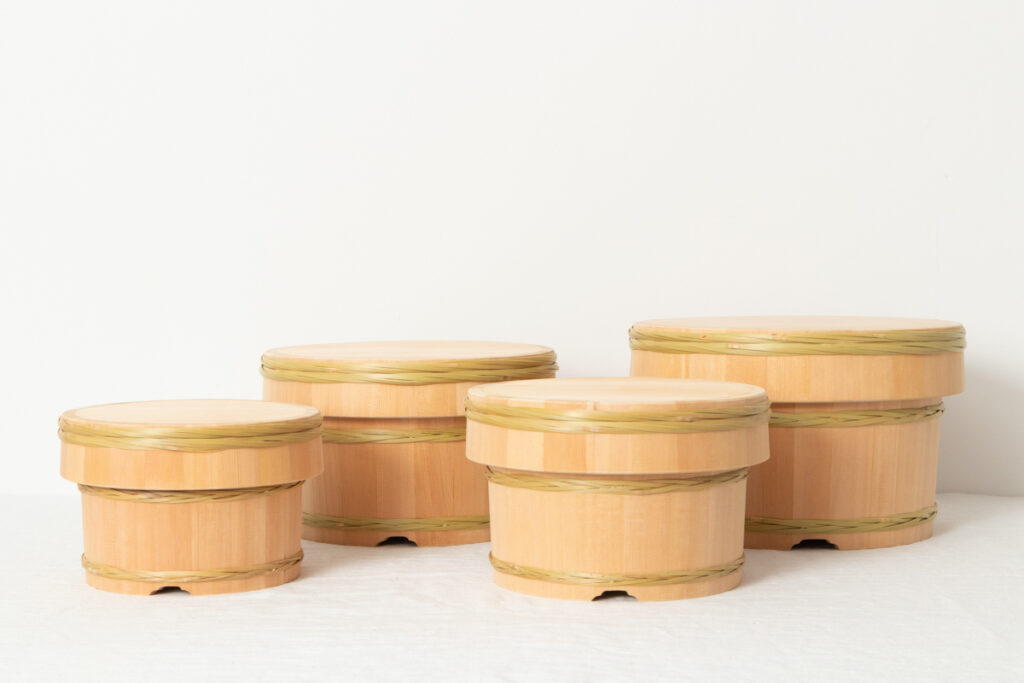
Sawara gently absorbs moisture and has a more subdued scent compared to hinoki.
Its mild character makes it well suited for use with food, and it has long been favored for items like rice tubs and drop lids.
We introduce an ohitsu fitted with a bamboo hoop, known as a “taga”, which is placed around the body of the tub.
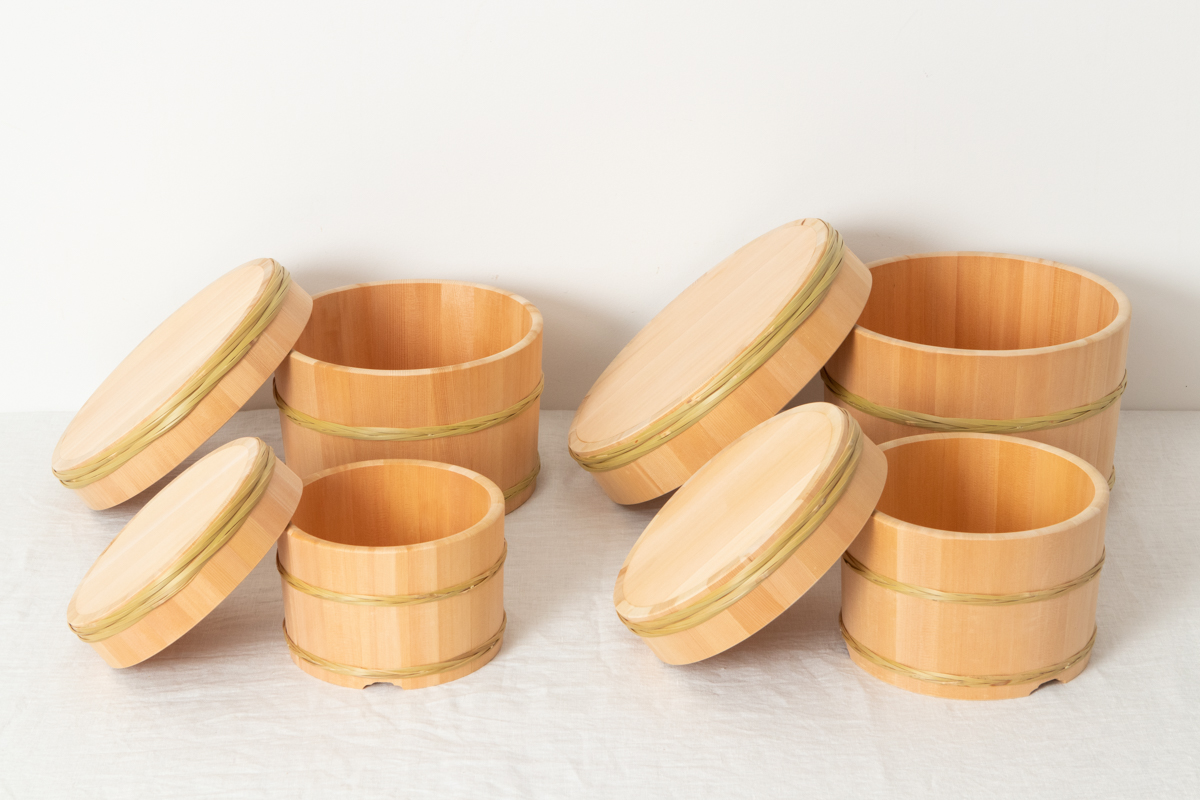
This ohitsu is available in four sizes: 18cm, 21cm, 24cm, and 27cm in diameter
(approx. 7.09″ to 10.63″).
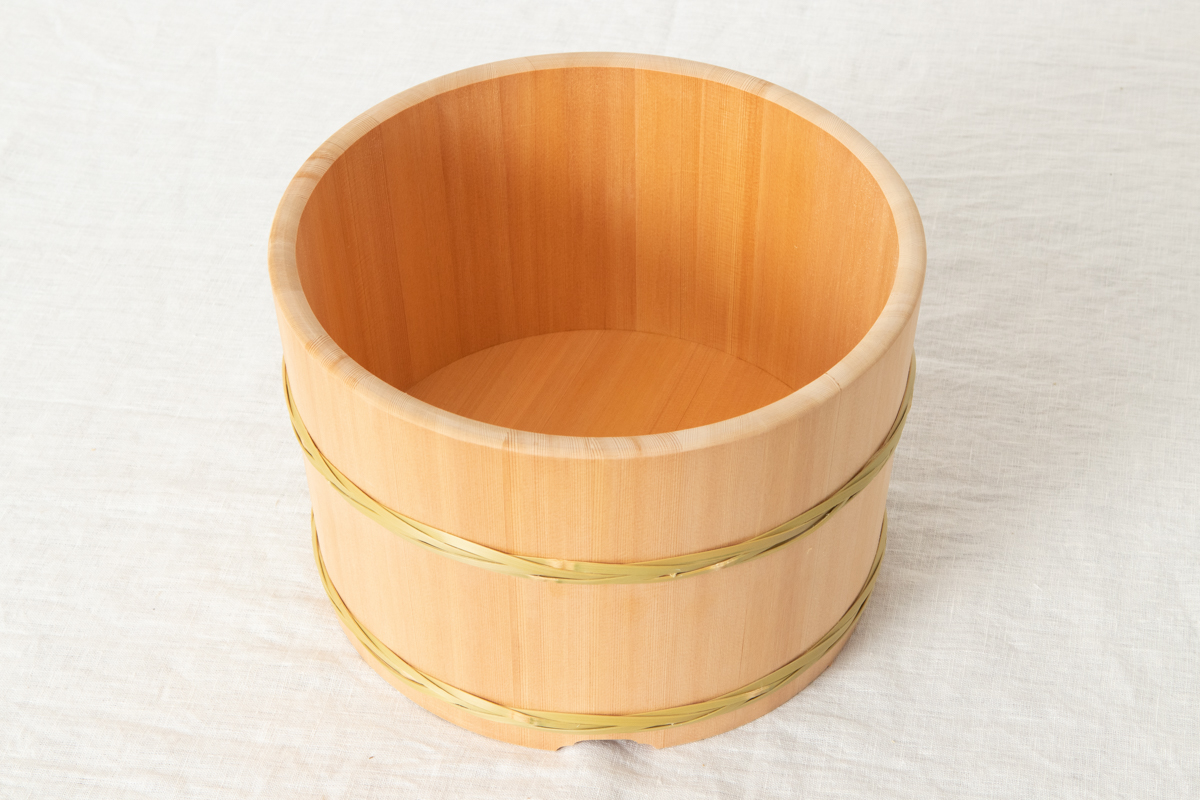
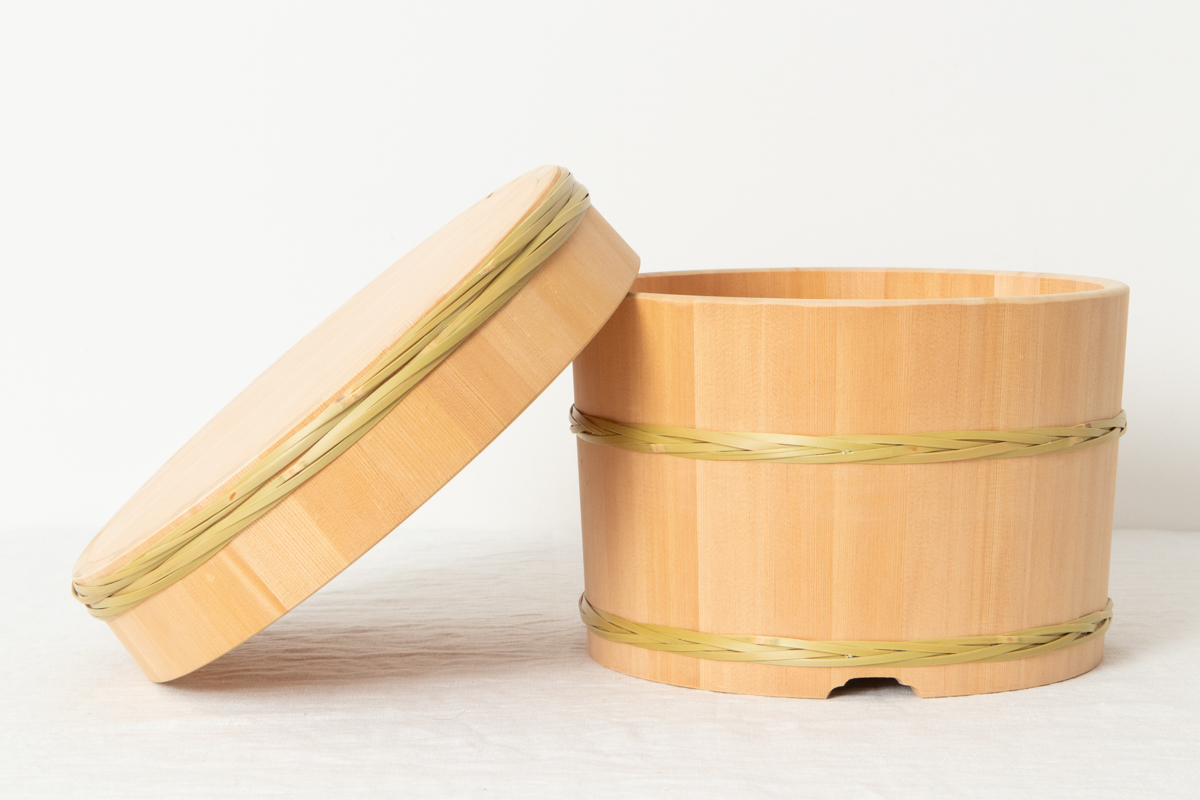
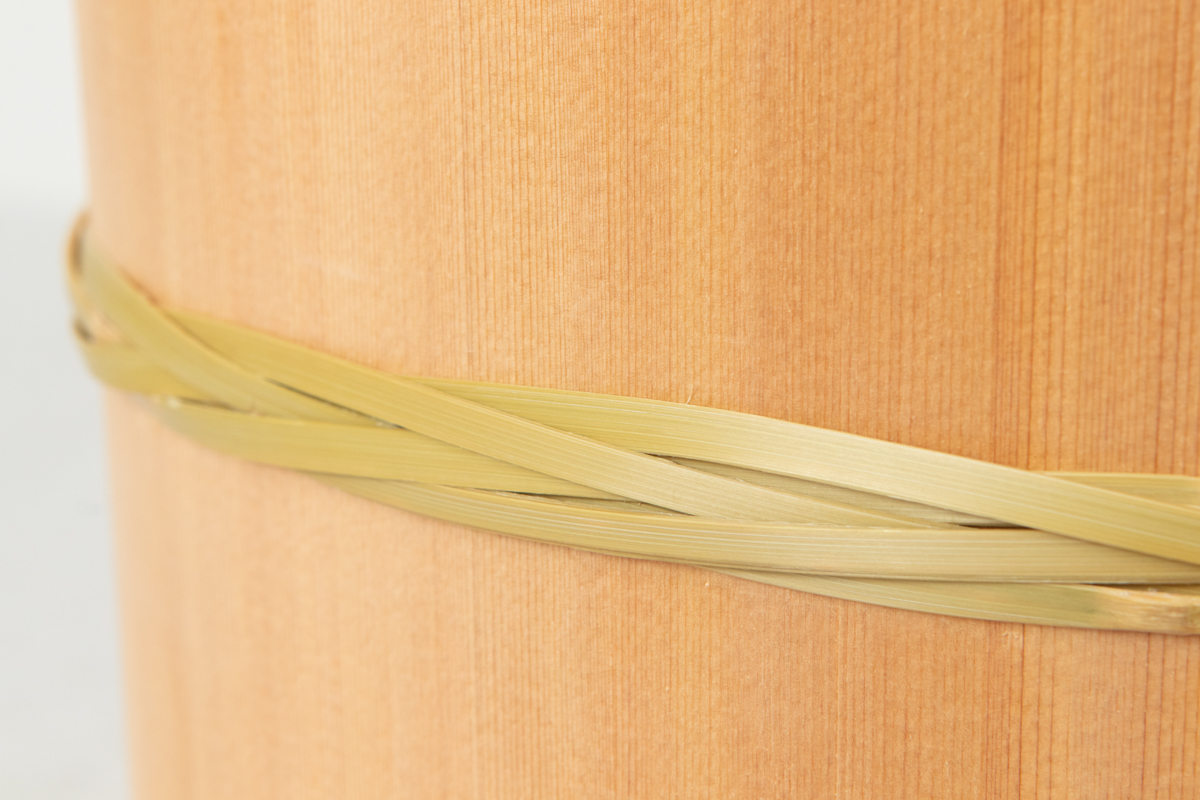
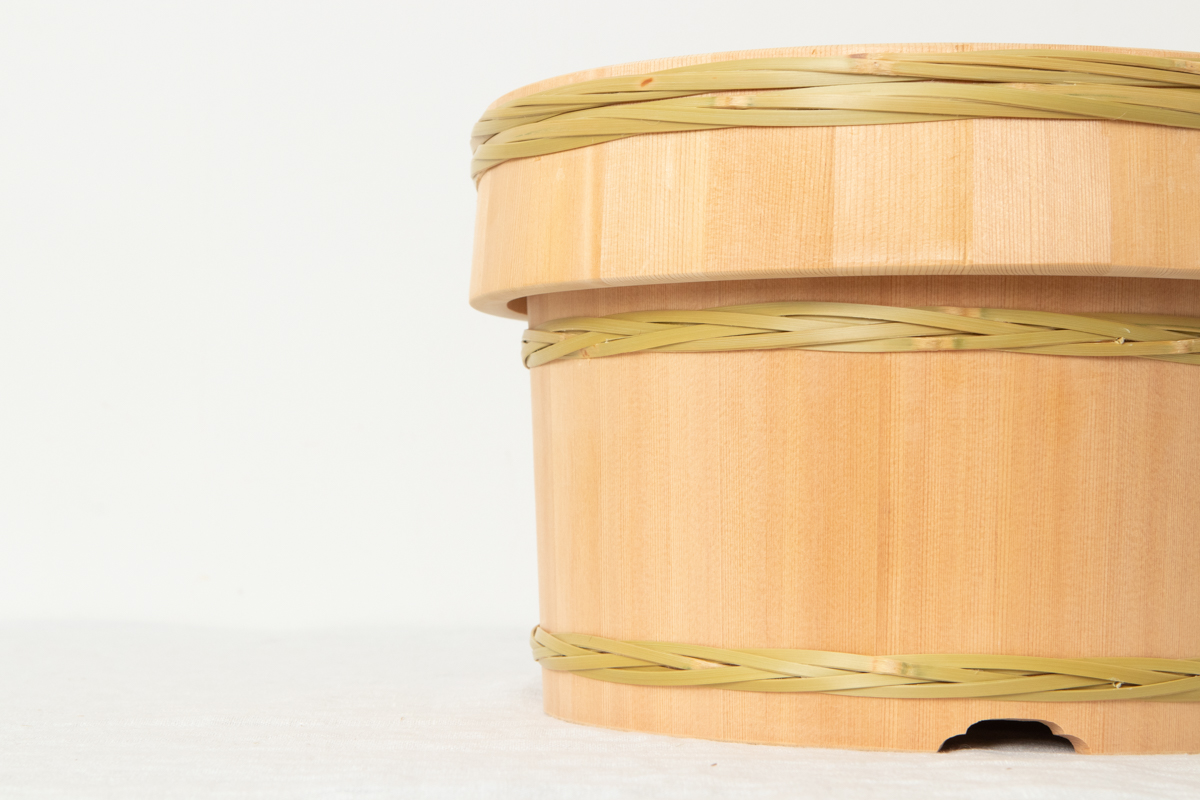
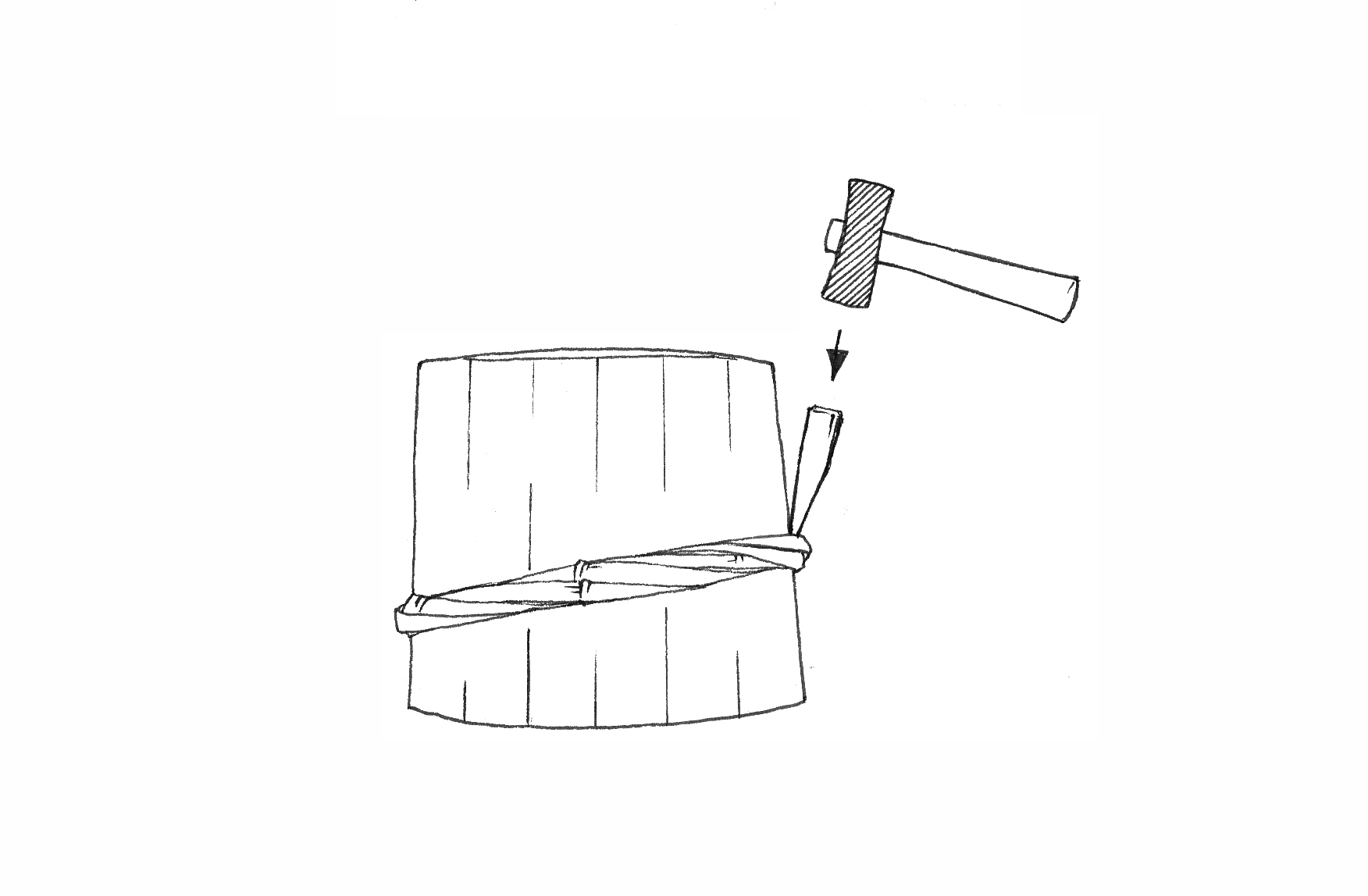
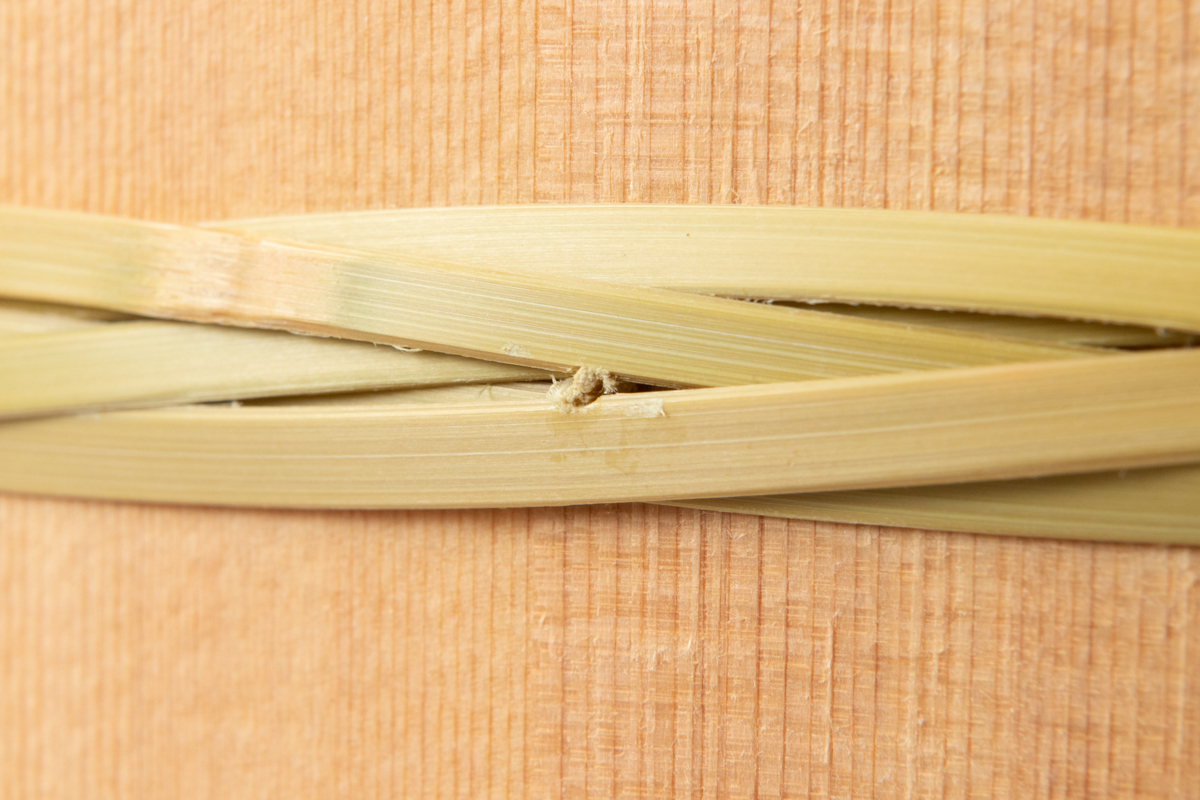
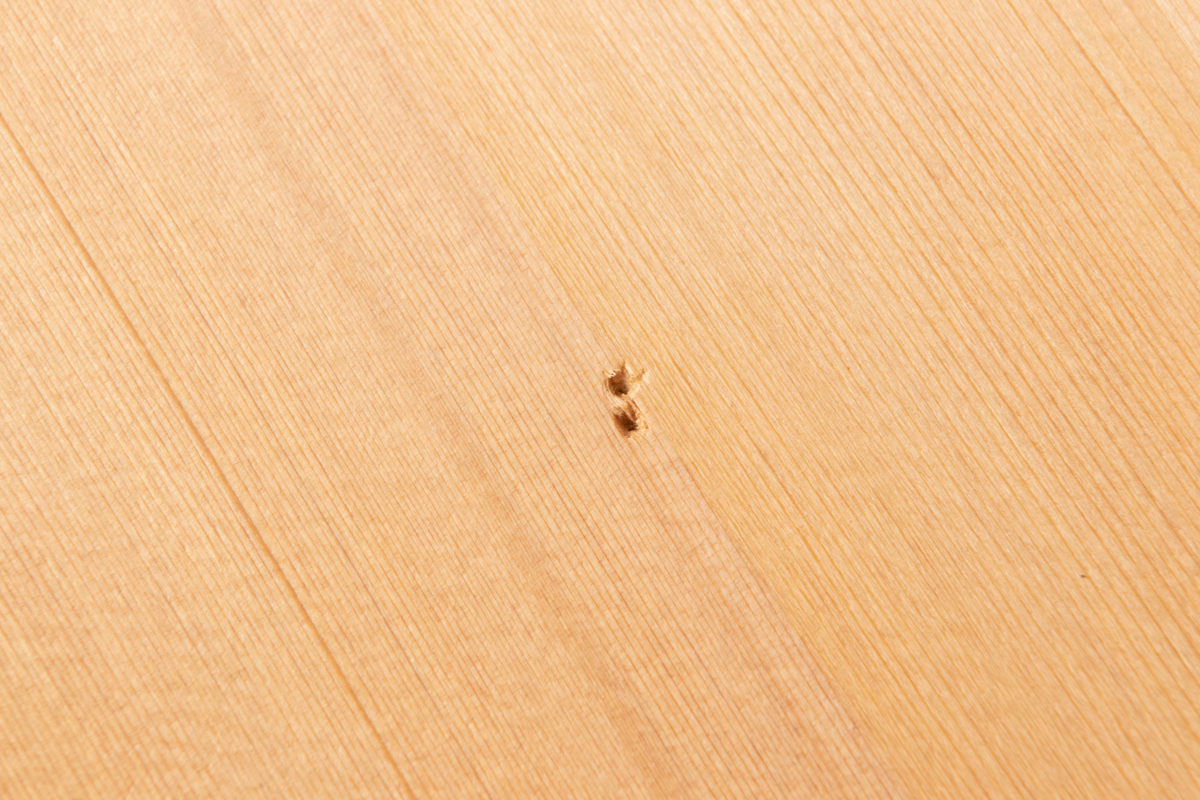
Because this product is made from natural wood, knots may appear, along with occasional dents or recesses around them. These do not affect the use and are not regarded as defects.
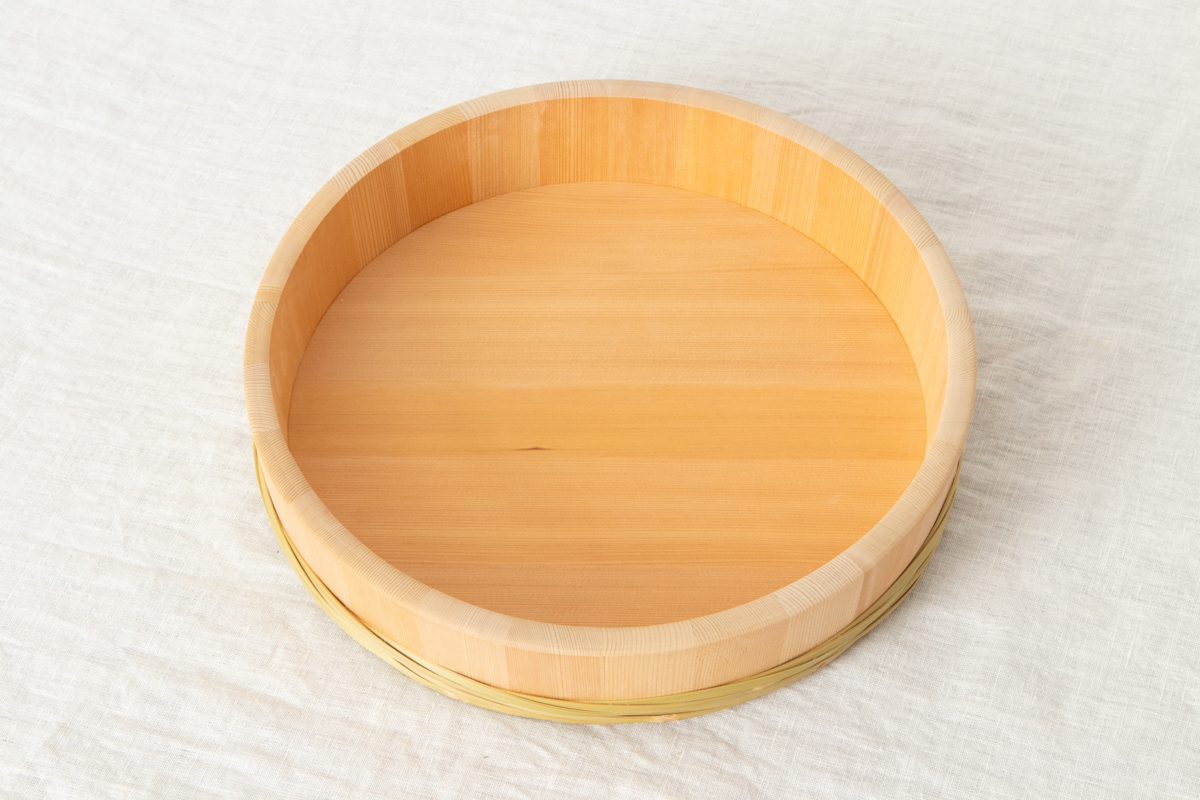
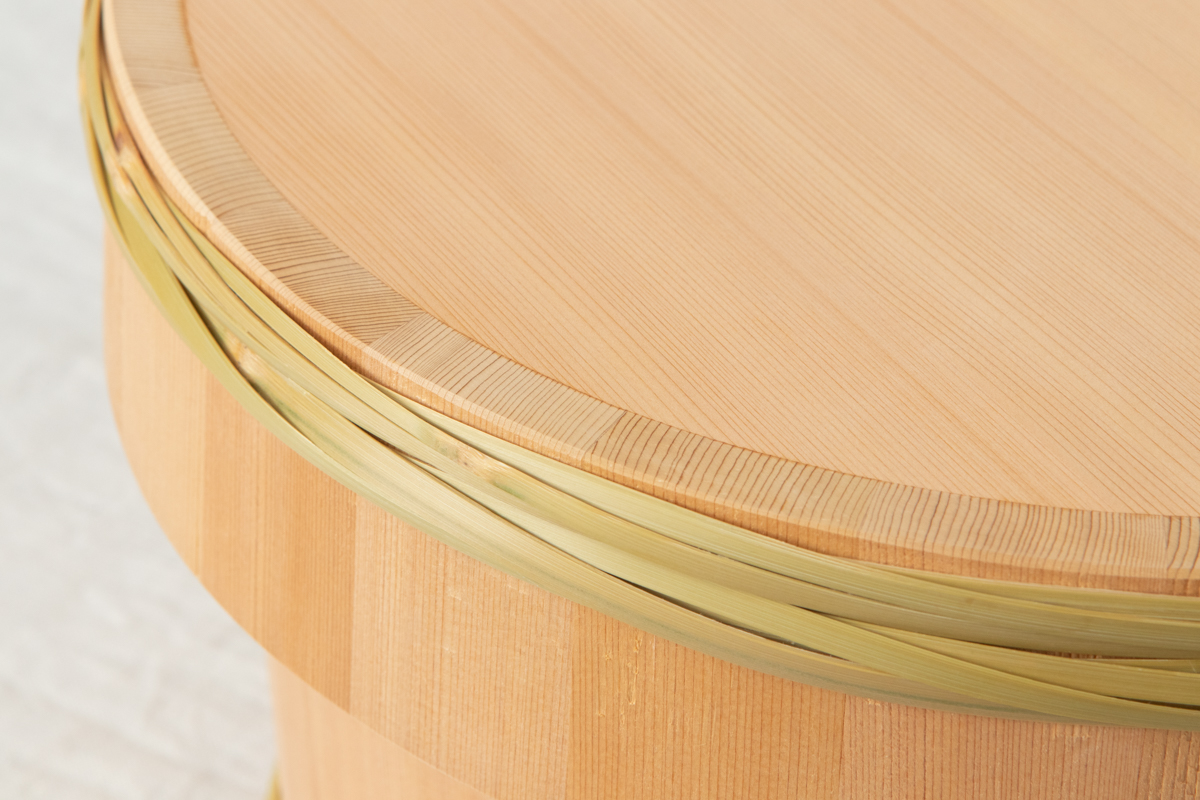

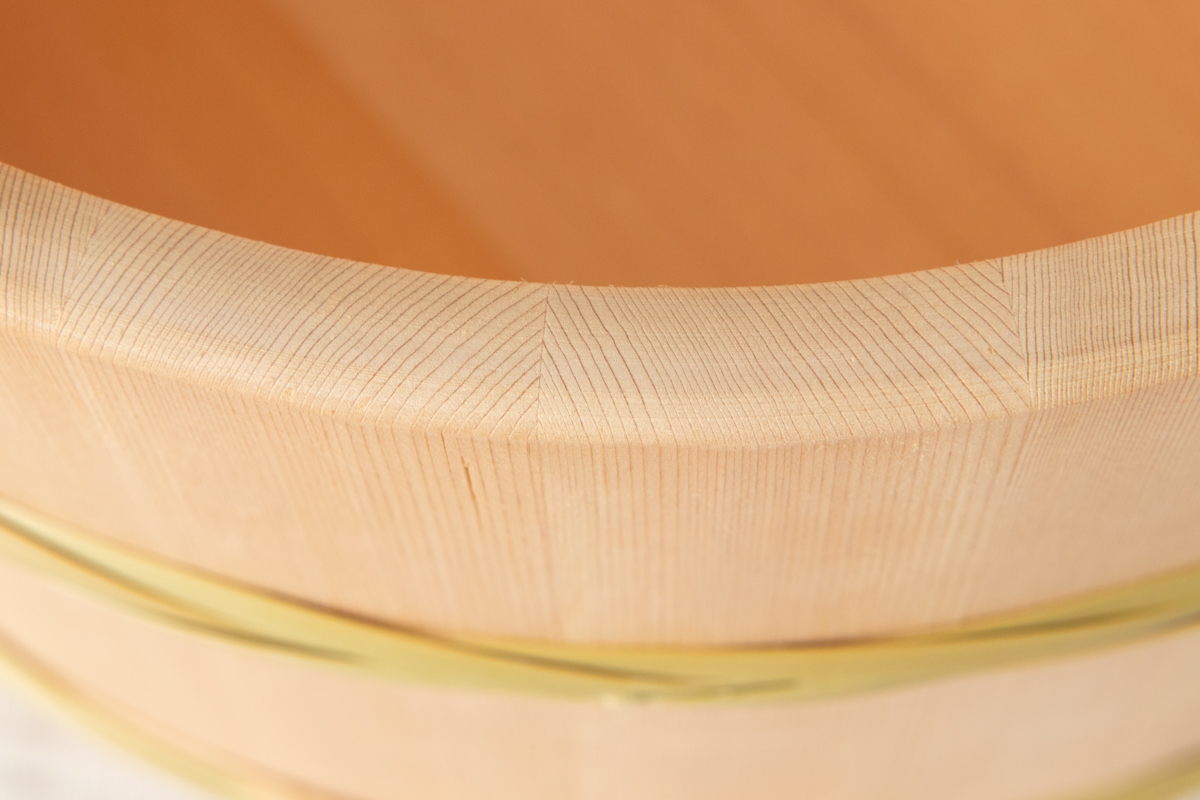
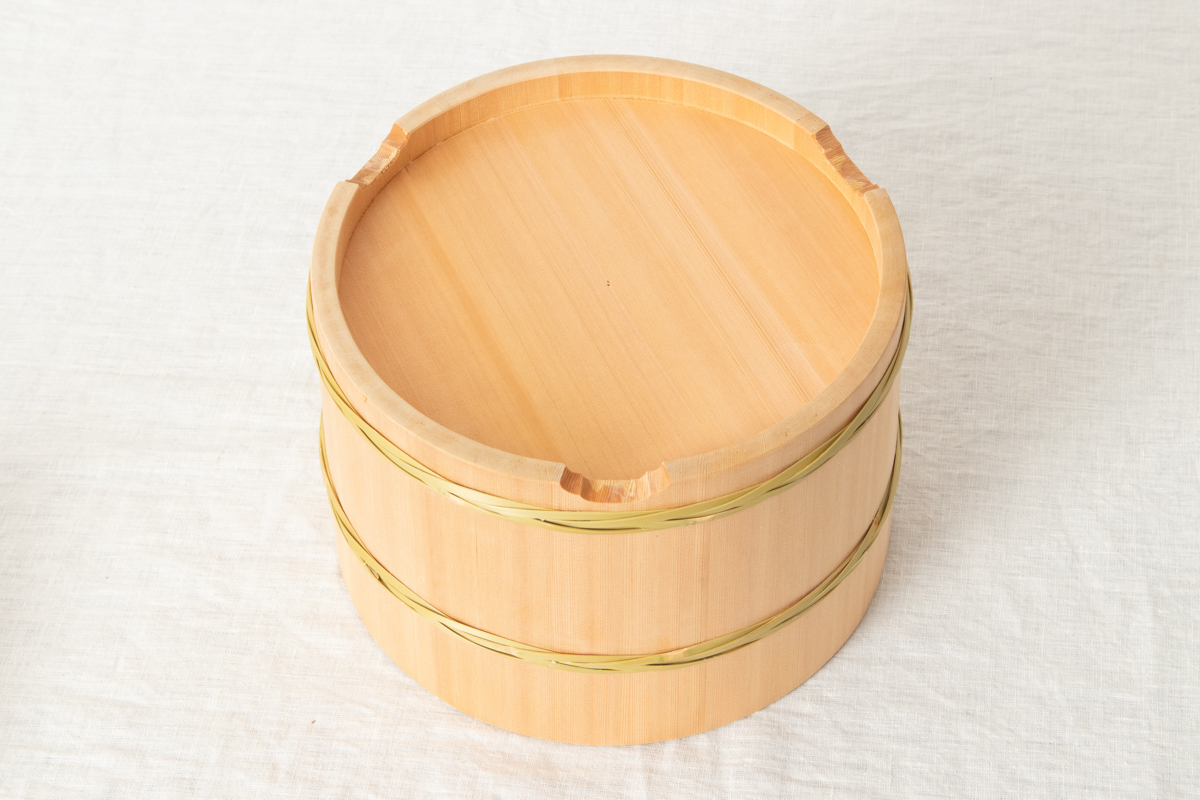
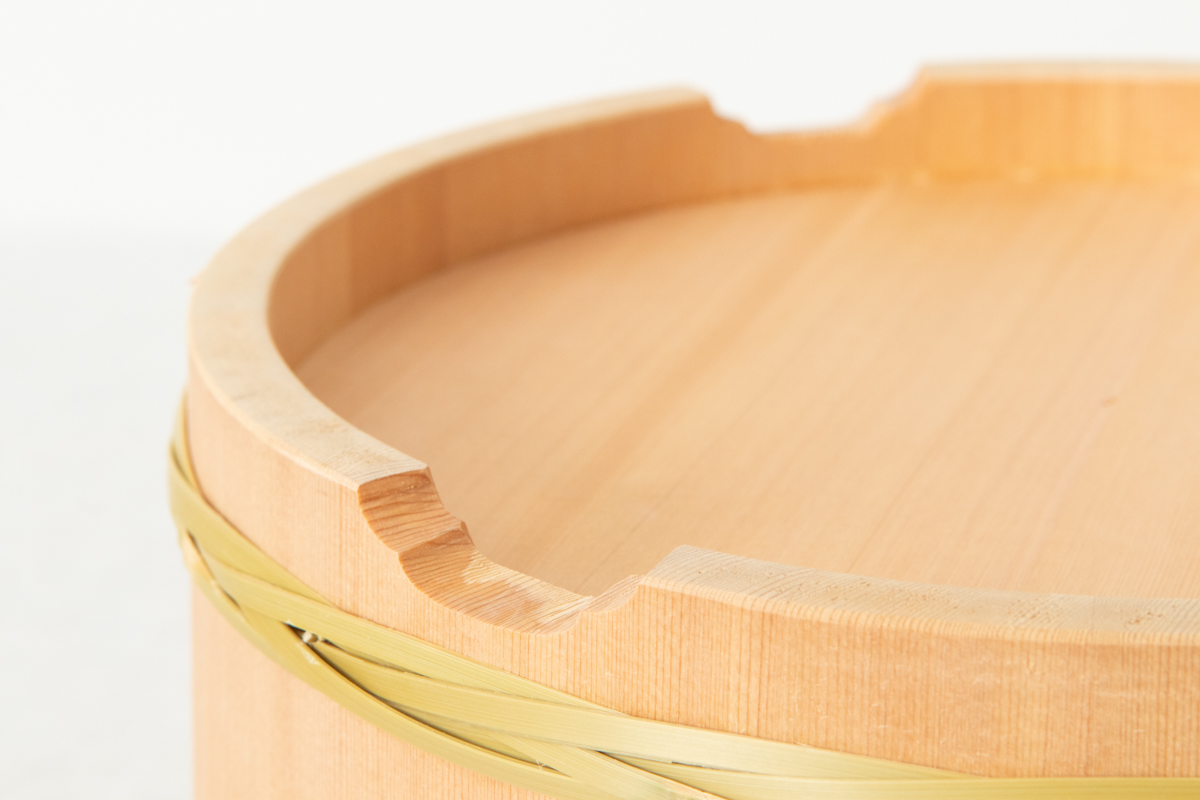
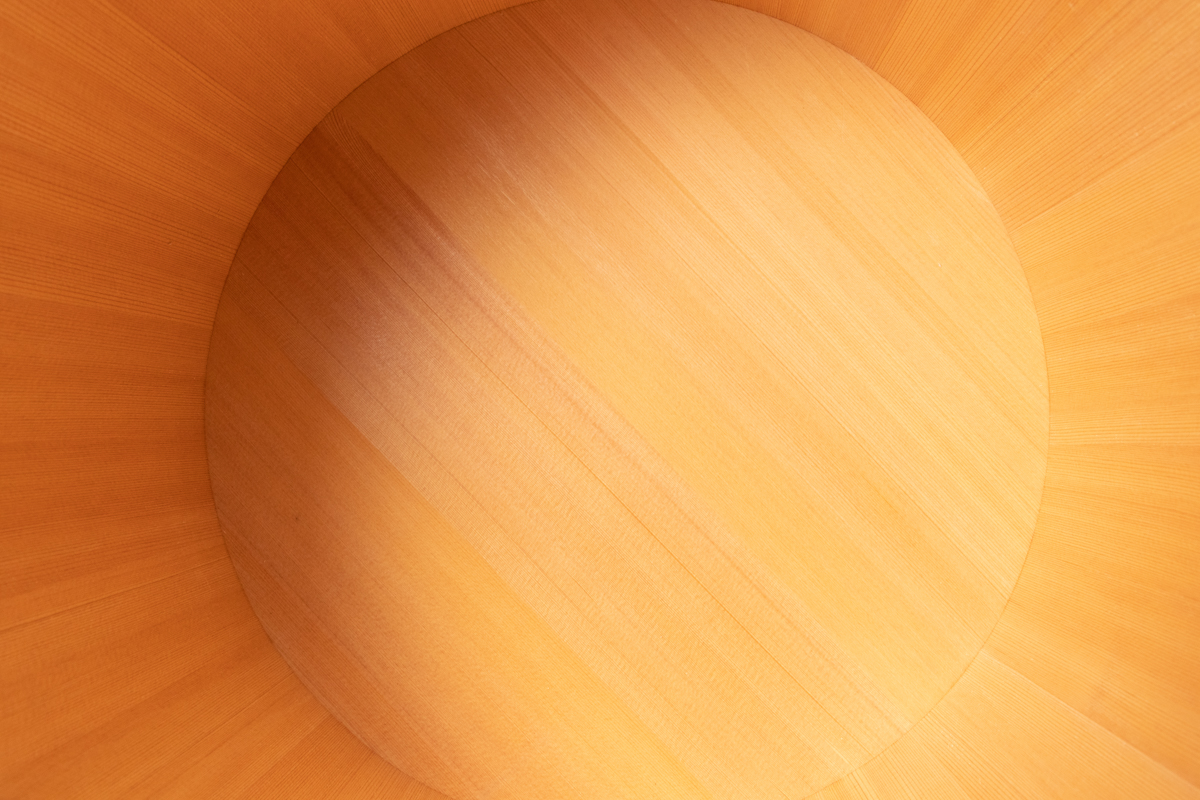


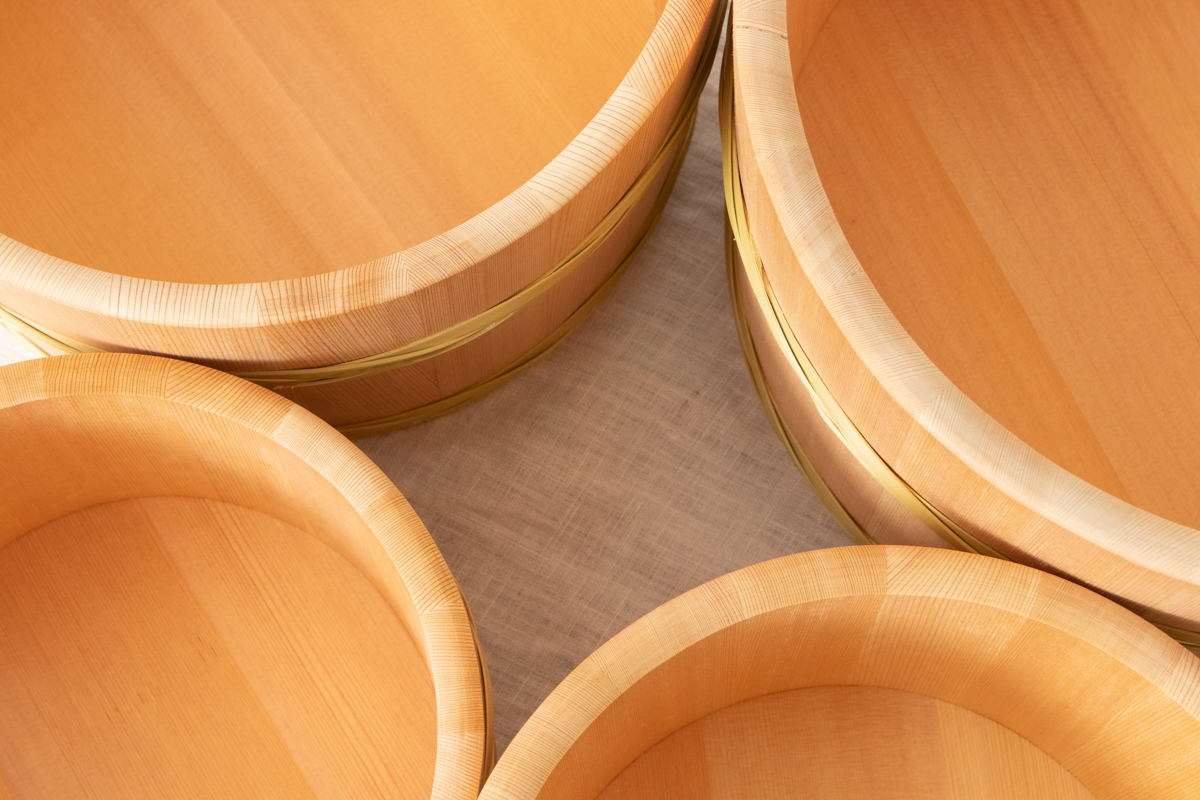
Let us introduce the sizes one by one.
When using an ohitsu to store cooked rice,
we recommend choosing a size with room for about one extra cup beyond the amount you wish to store.
In Japan, one cup (gō) of rice is equivalent to approximately 180ml of uncooked rice.
For example, if you usually cook 3 cups of rice, eat 1, and store the remaining 2 cups,
the 18cm (7.09″) size would be suitable.
If you typically cook 5 cups, eat 2, and store 3, the 21cm (8.27″) size would be a good choice.
We hope this helps you find the size that suits your needs.
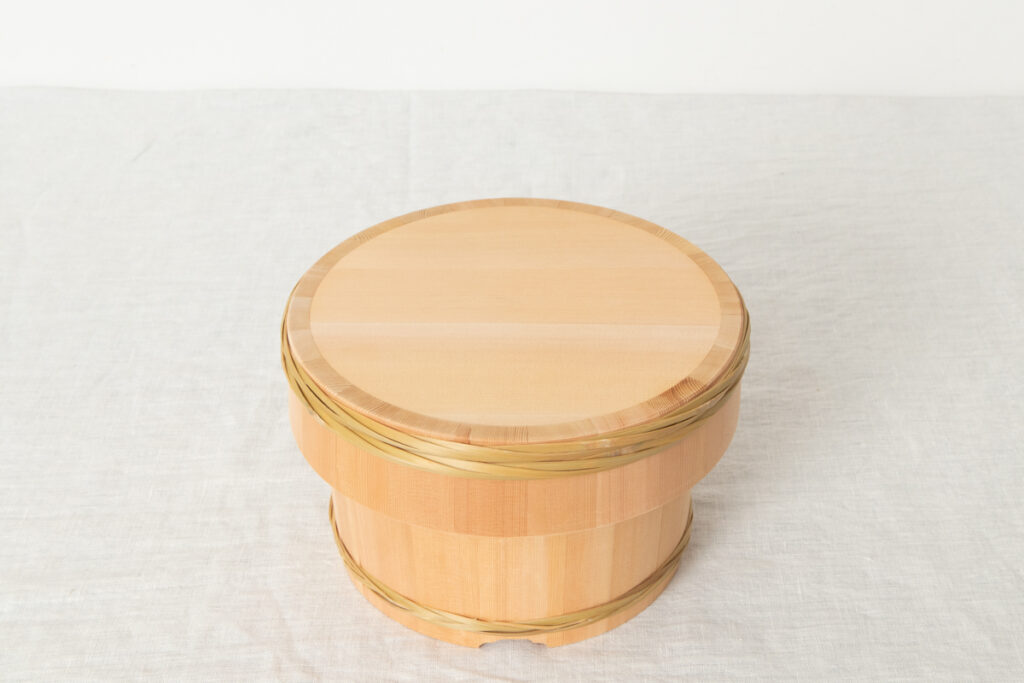
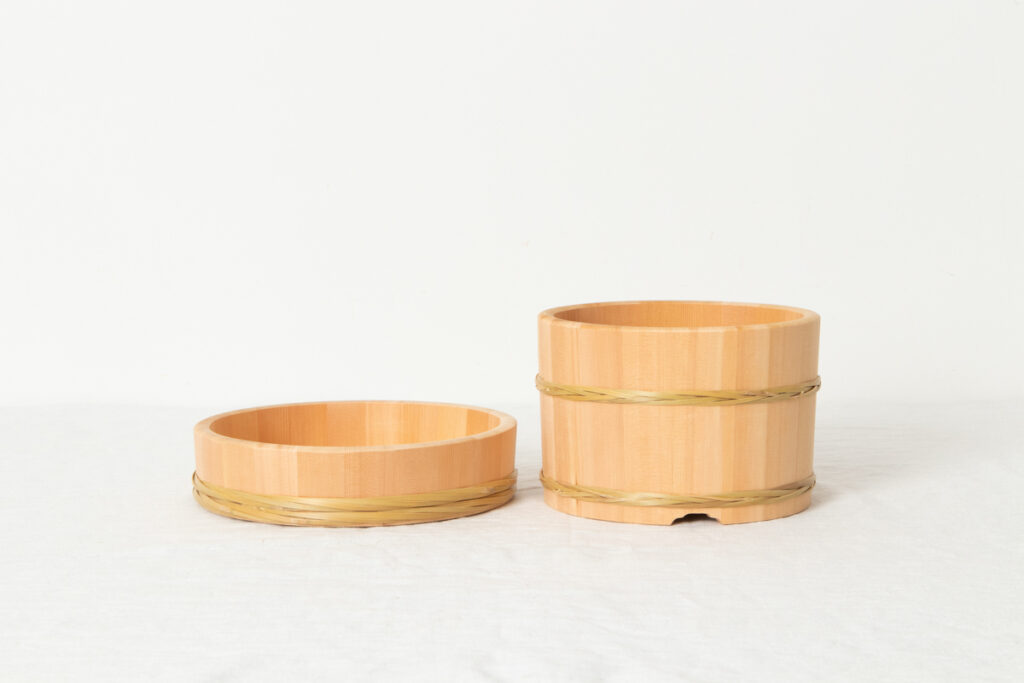
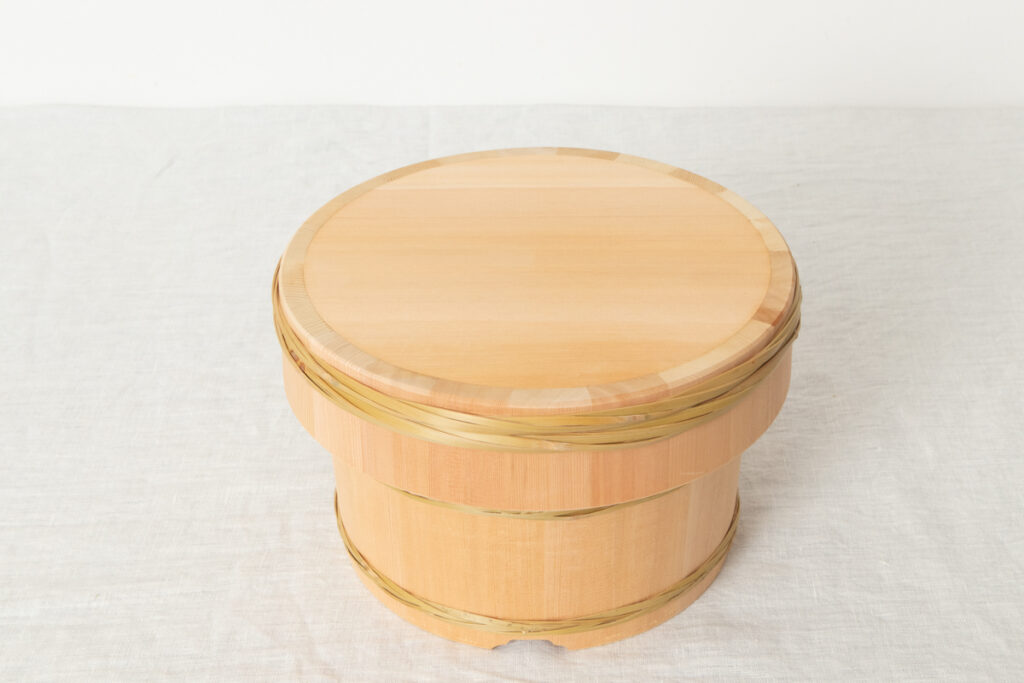

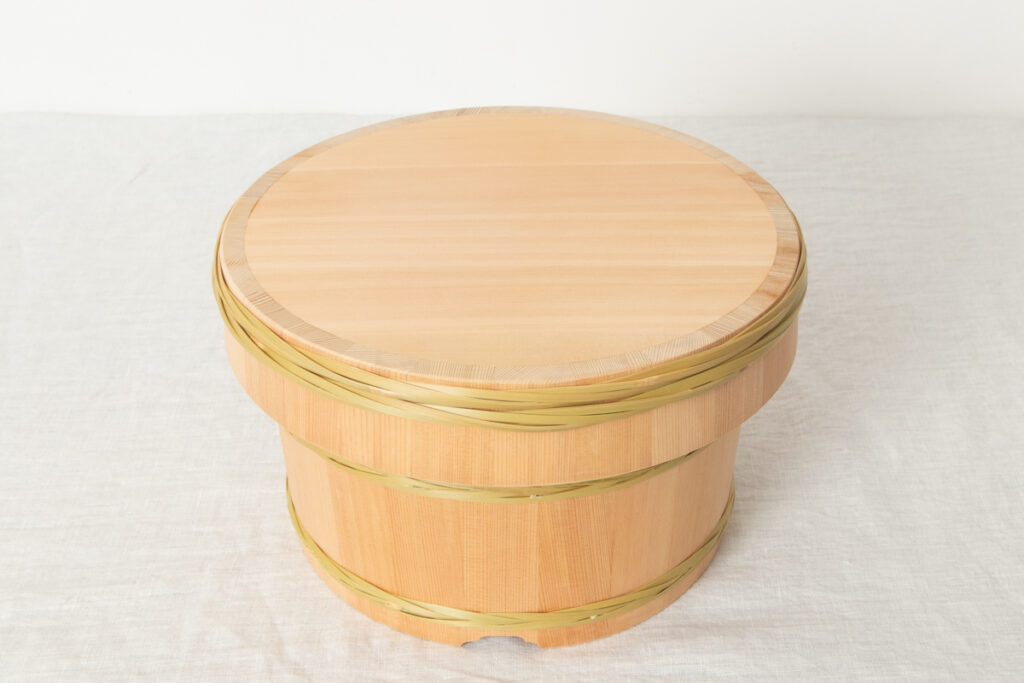
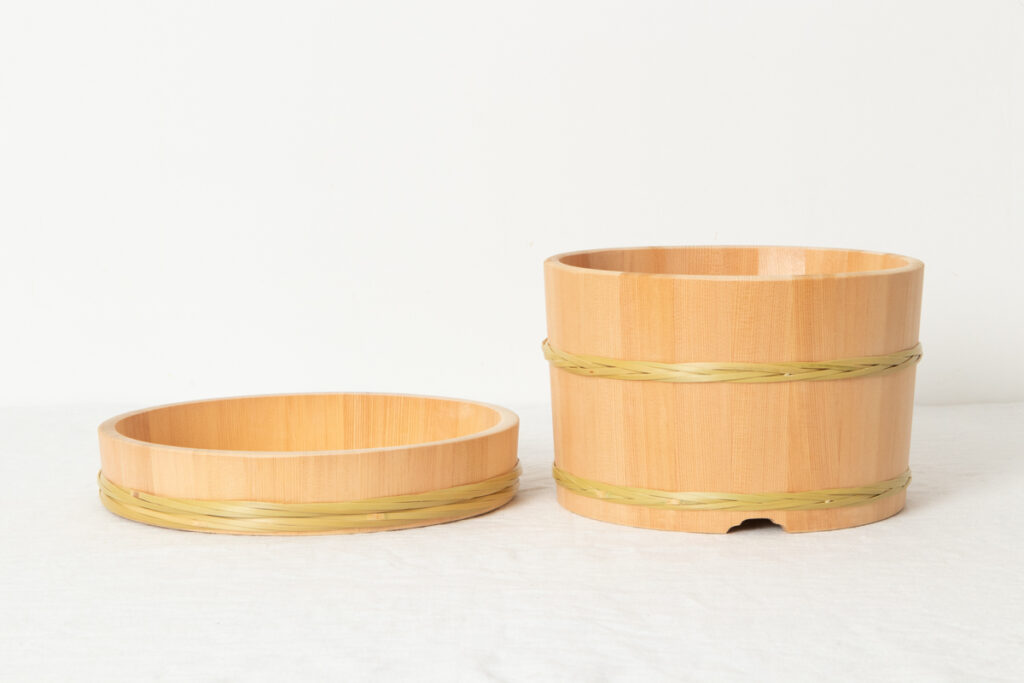
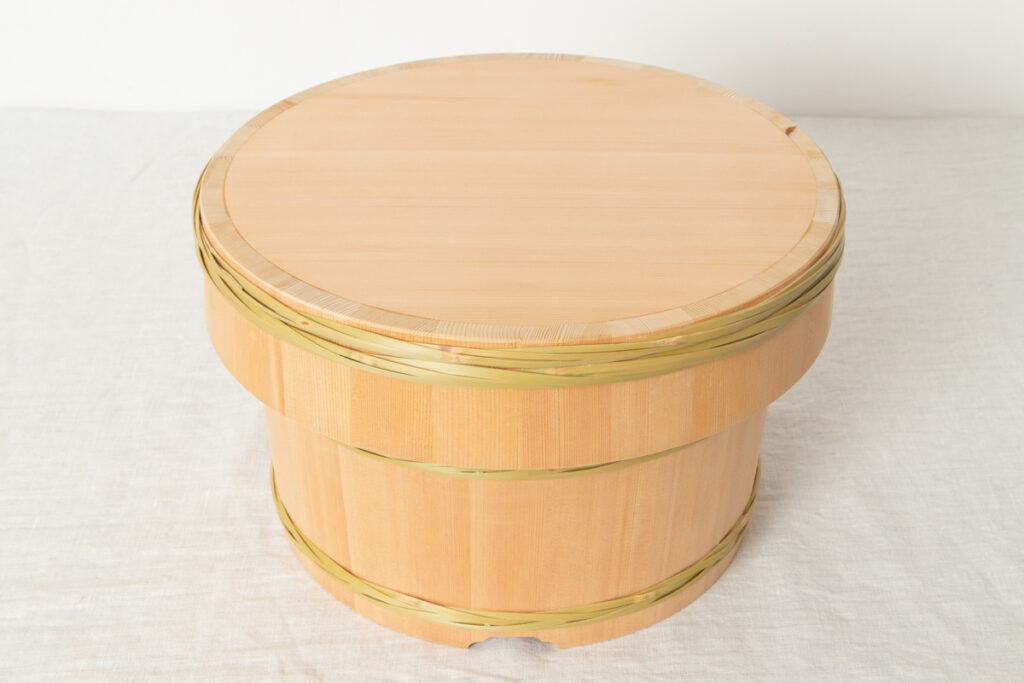
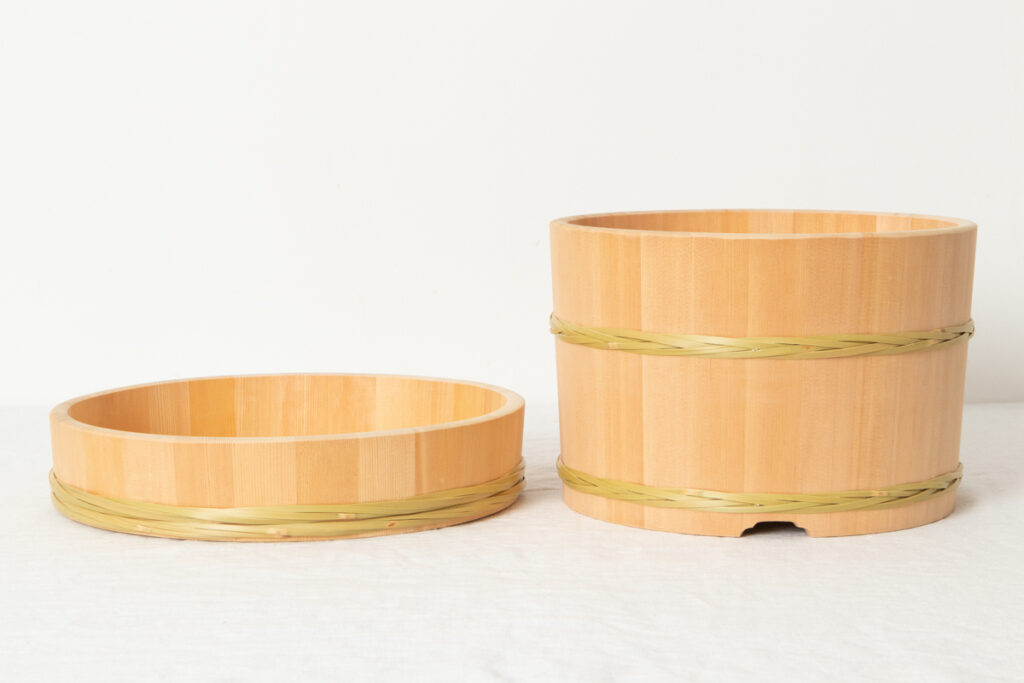
Now let us show you how the ohitsu is used in everyday life.
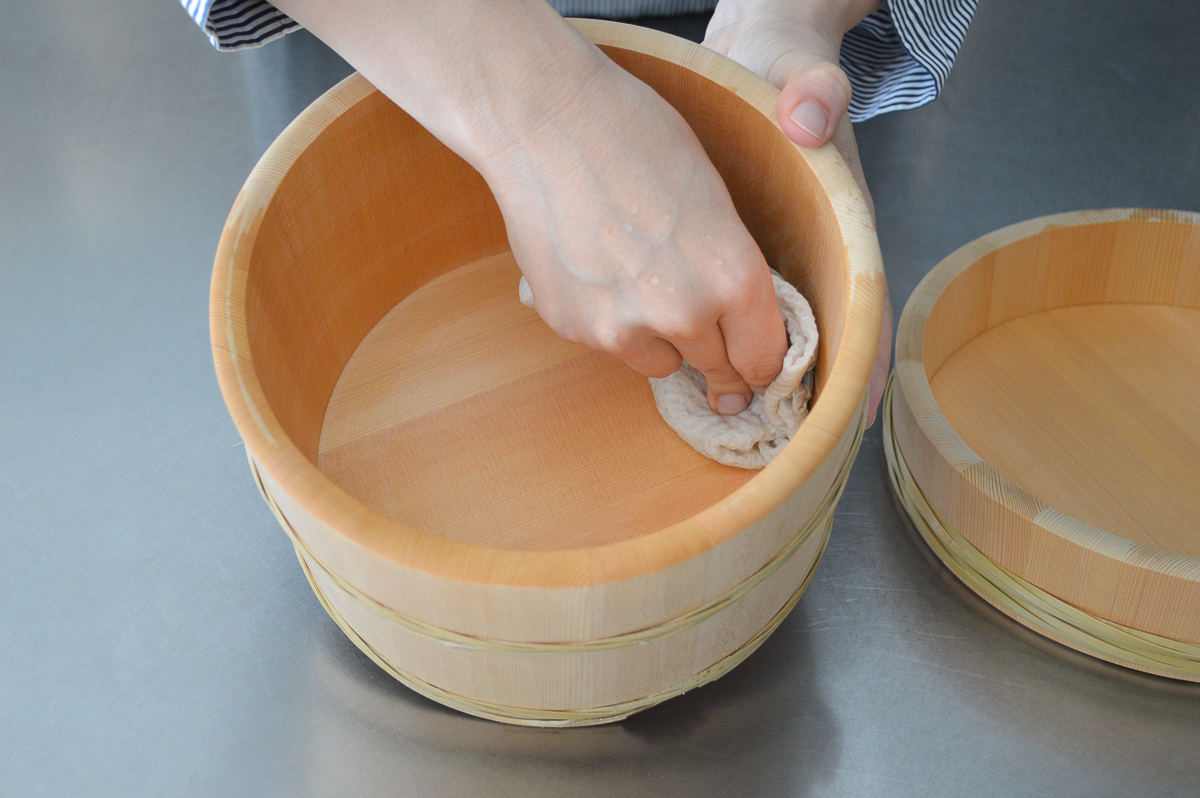
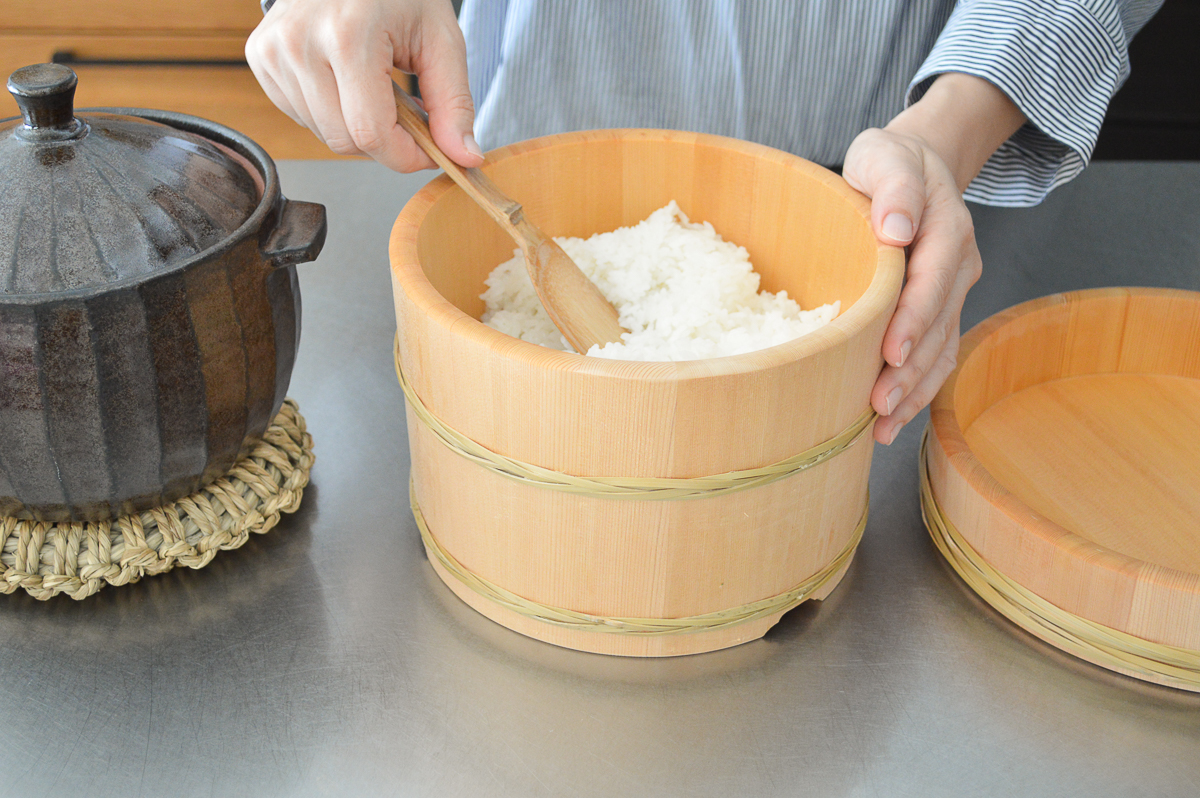
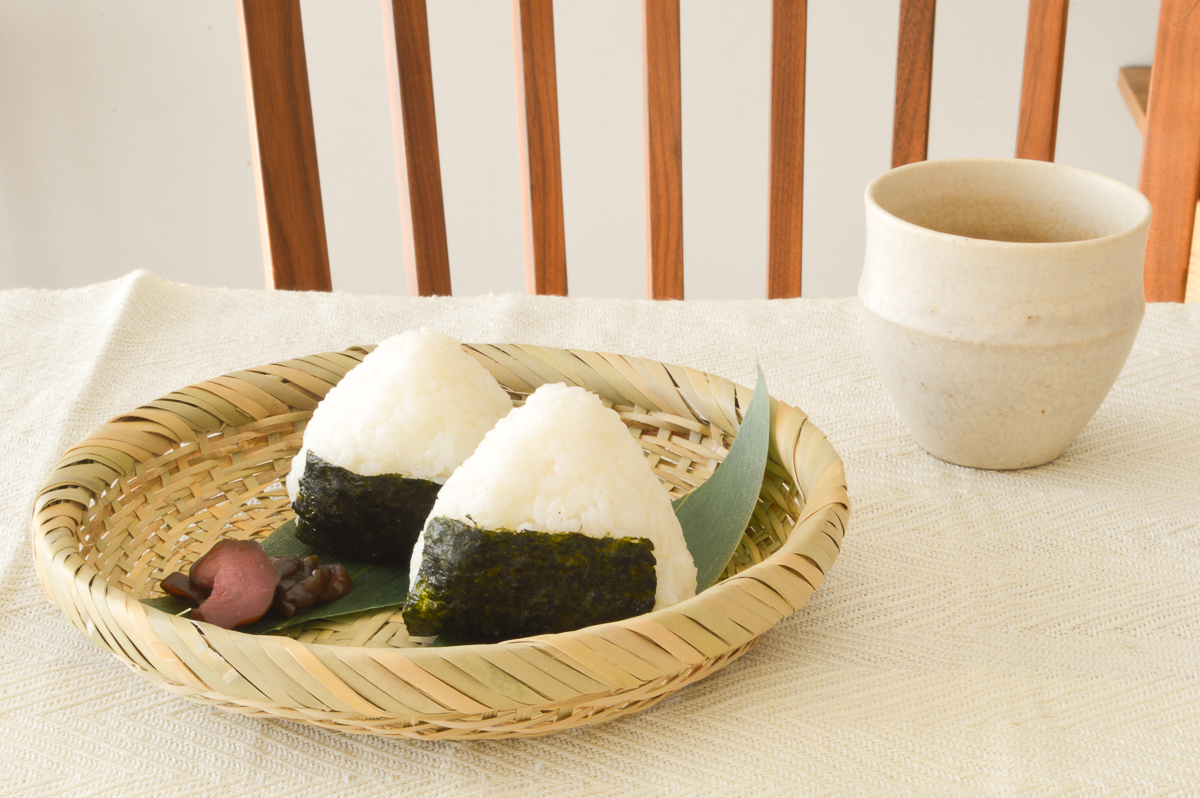
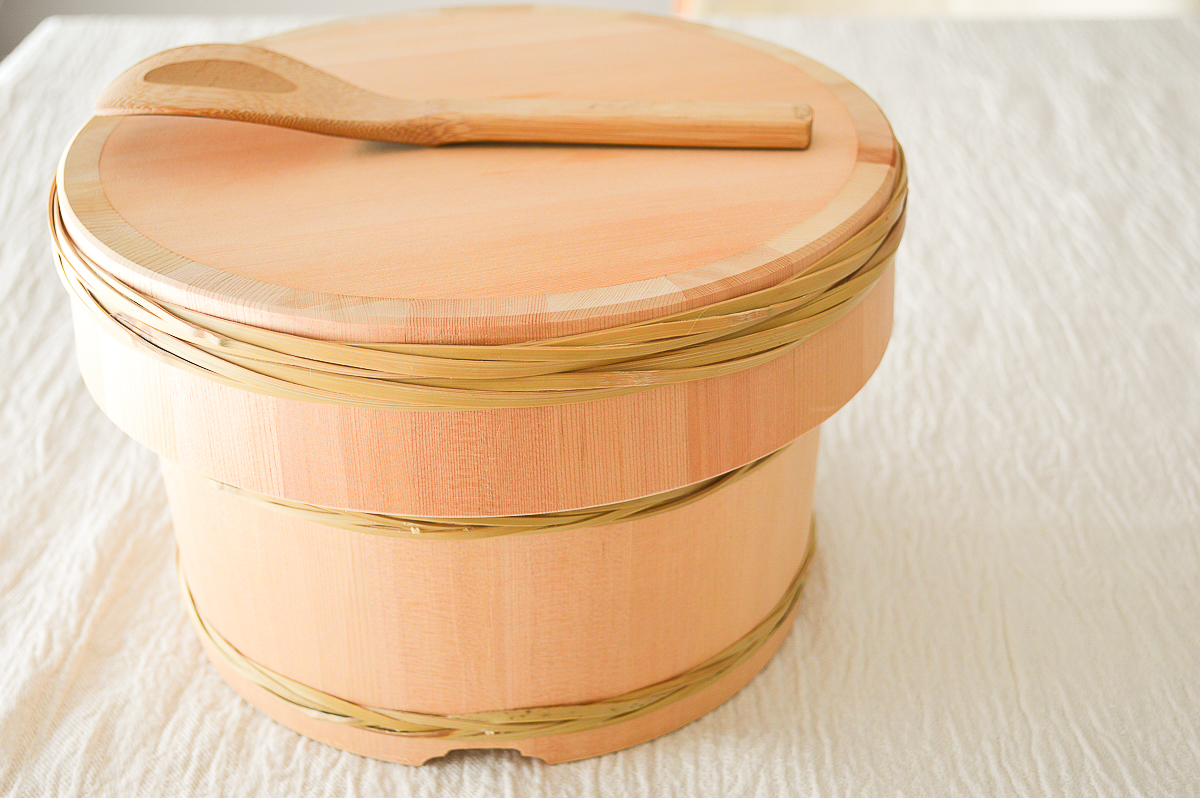
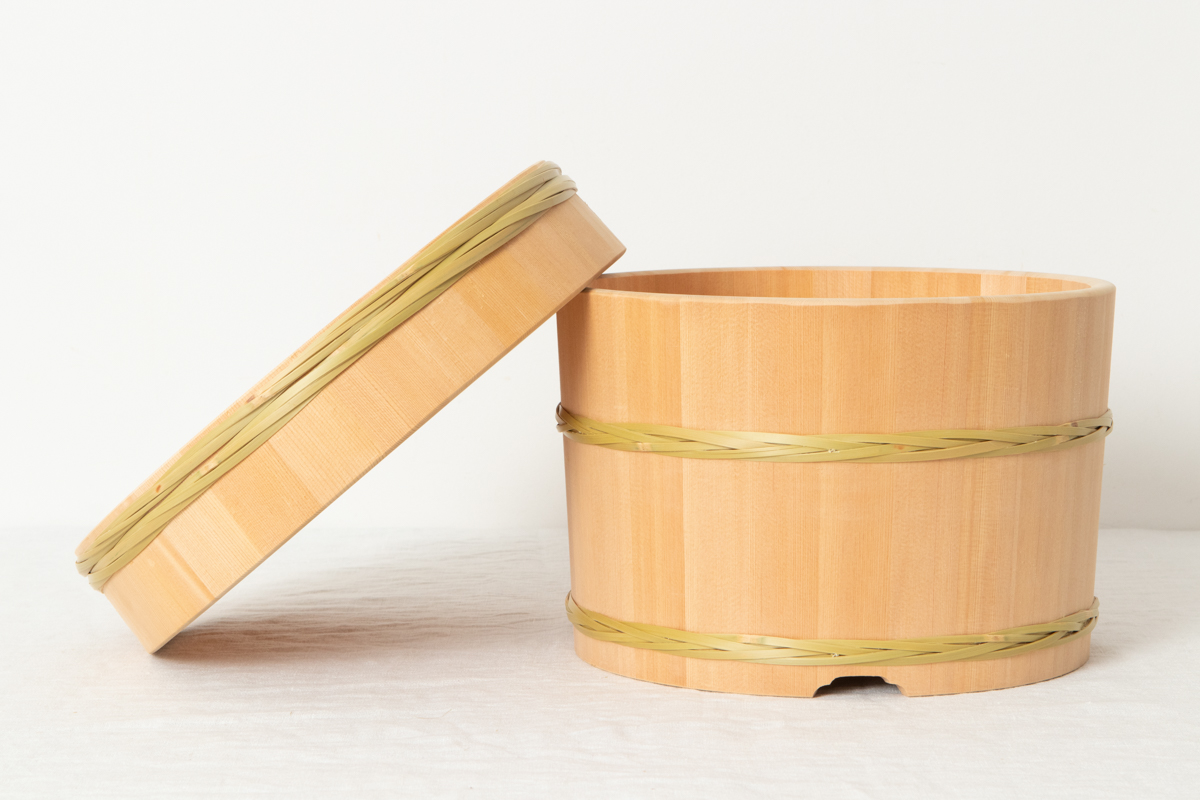
Even after the rice cools and time passes,
it won’t become dry or crumbly like rice stored in the refrigerator.
Instead, it stays soft and moist, with a gentle scent of sawara—still delicious to eat.
You can also make rice balls and keep them in the ohitsu until ready to eat.
Or, place the rice in a steamer to reheat it
before serving—another way to enjoy its gentle texture.
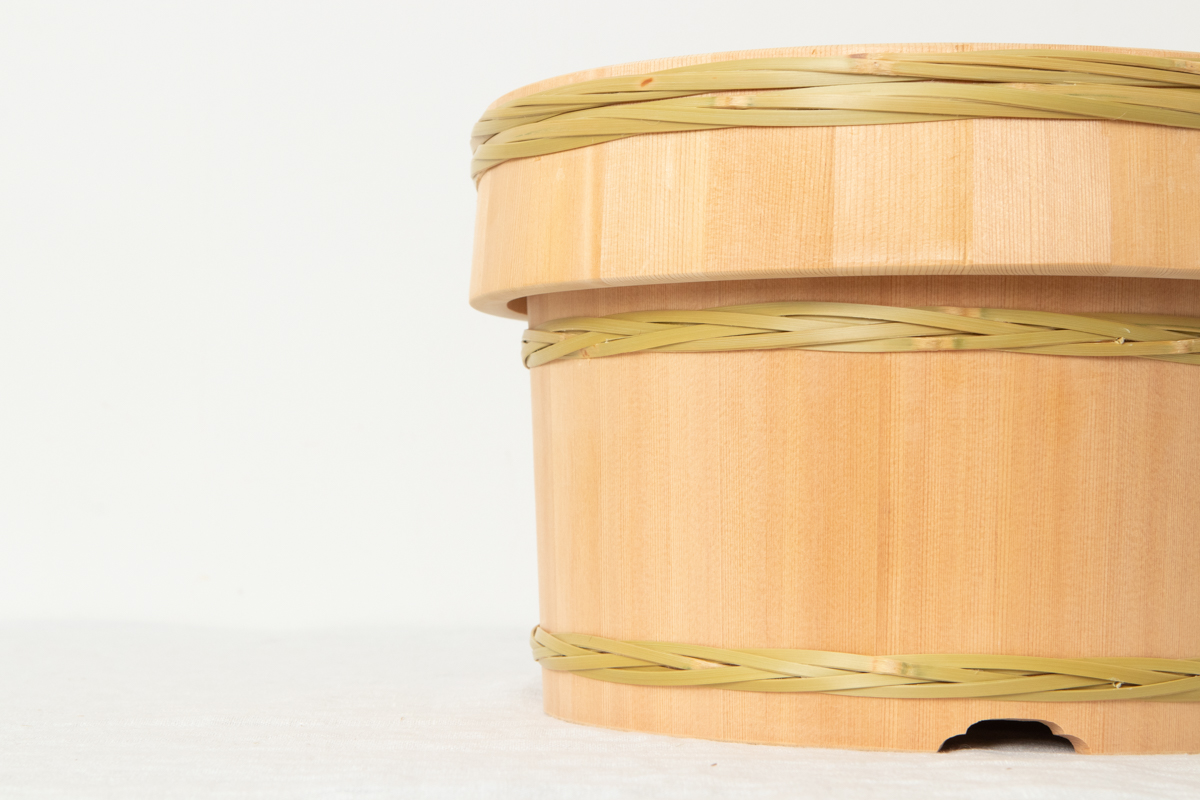
Wooden tubs like this may no longer be a familiar part of daily life,
but when you see an ohitsu finished with a bamboo hoop,
there’s something comforting—something that feels quietly familiar.
When newly made, the bamboo still retains a slight green tint,
creating a beautiful contrast with the pale wood.

Please store the ohitsu in a cool, well-ventilated area, away from direct sunlight.
Rice cookers and refrigerators are essential tools in modern life,
but there is a kind of quiet value that only an ohitsu can offer.
Lightweight yet sturdy, this ohitsu is a simple, functional vessel—
designed by leaving only what’s necessary and removing the rest.
There is always a reason why certain things have been passed down through generations.
You may discover a new and delicious relationship with rice.
Please check the size and choose the one that suits you best.
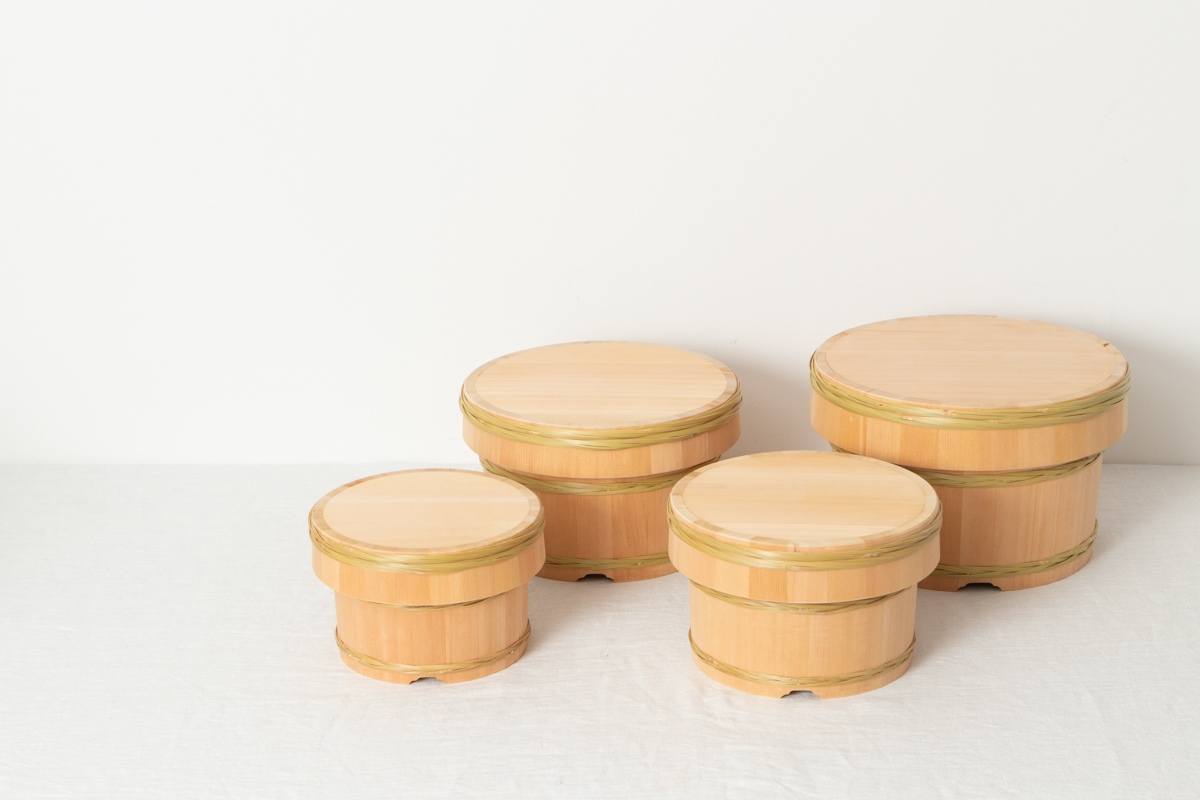
Care Instructions
- Before use, gently wipe the inside of the tub with a damp cloth.
- After each use, avoid synthetic detergents.
Instead, clean both the inside and outside with salt or a powder cleanser.
Do not leave standing water in the tub, as this can accelerate the deterioration of the wood. - After washing and drying,
spraying the inside with sanitizing alcohol (ethanol) can help prevent mold and discoloration. - Allow the tub to air-dry in a shaded, well-ventilated area—such as near a window or ventilation fan.
Avoid direct sunlight, as rapid drying may cause the wood to shrink,
leading to the hoop coming loose, cracking, or warping. - Do not use a dishwasher or dish dryer.
- If the ohitsu will not be used for over a month, wrap the body and lid separately in paper or cloth.
Store them in a cool, dry place with a stable temperature.
Leave the lid open during storage.
Keeping it closed or storing it in a plastic bag may cause sap or resin to form.
Please note:
This item ships from Japan.
As the buyer, you are responsible for any import duties, customs fees, or local taxes that may be charged in your country.
These costs are not included in the item price or shipping cost.
Please check with your local customs authority if you are unsure about any potential charges before placing your order.

